
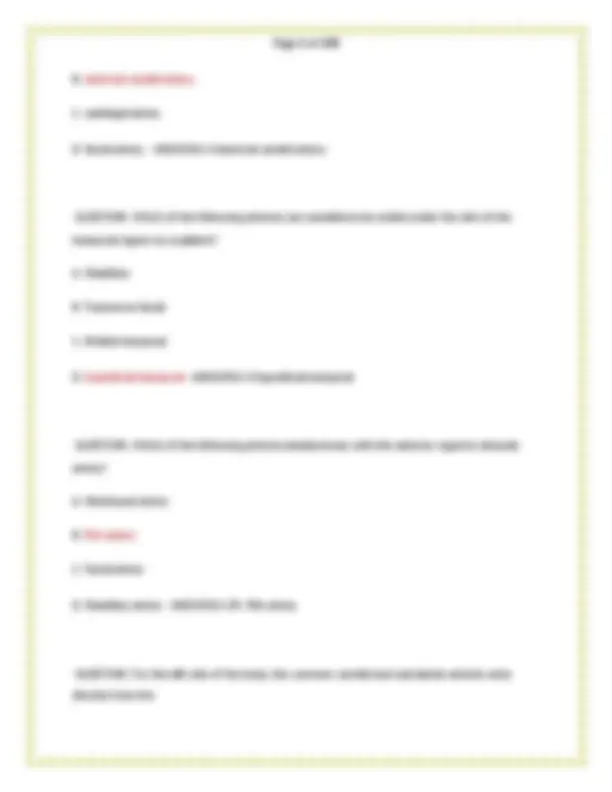
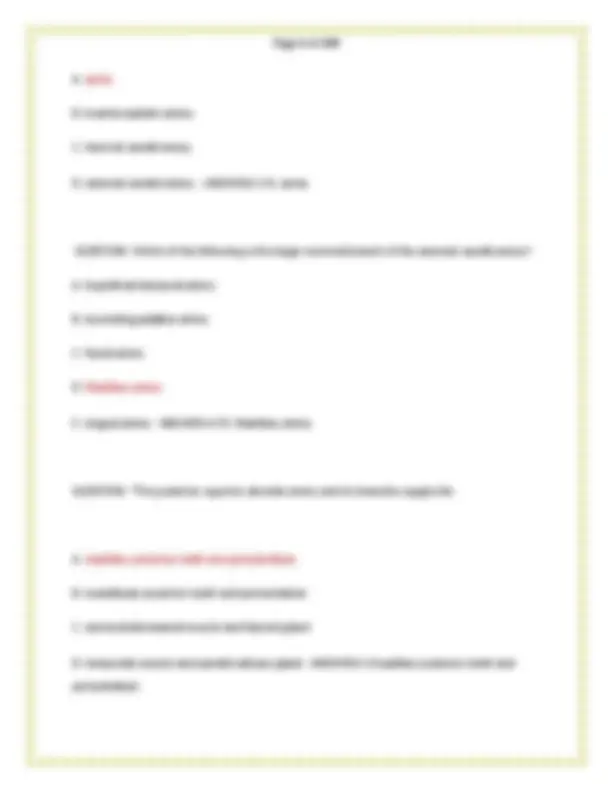
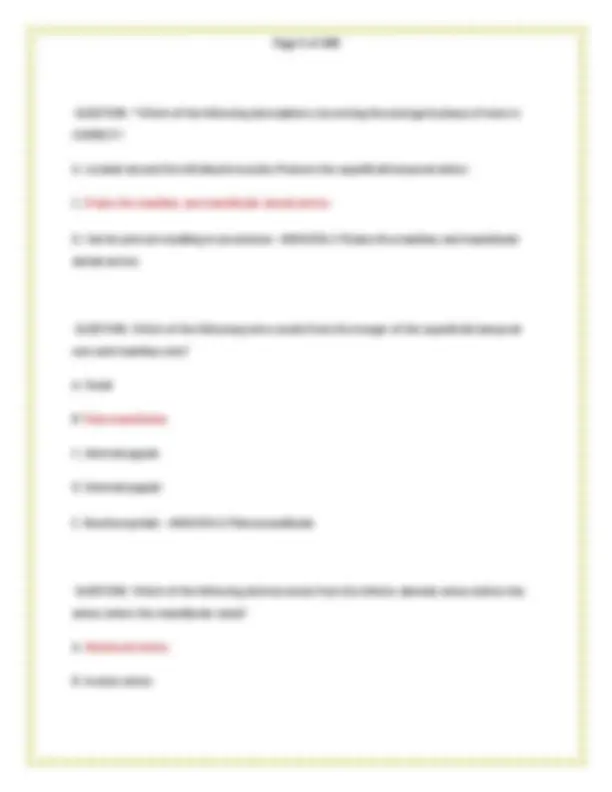
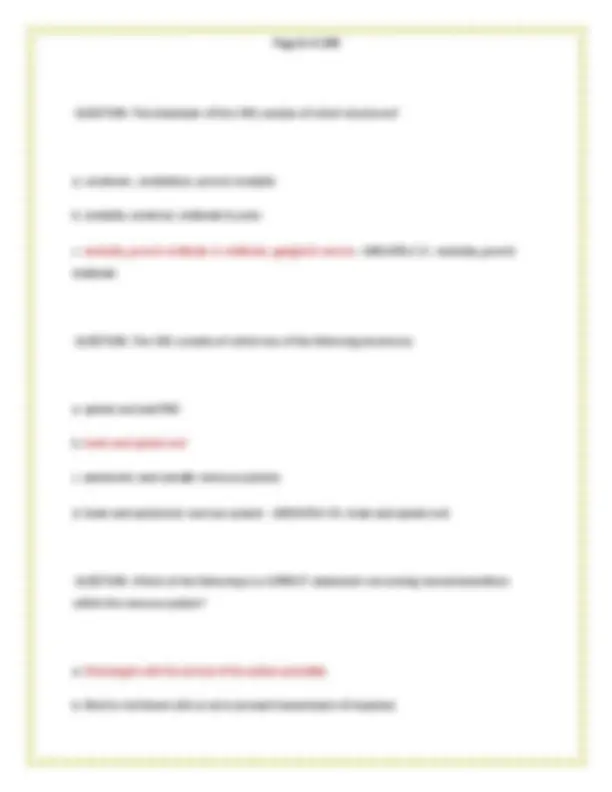
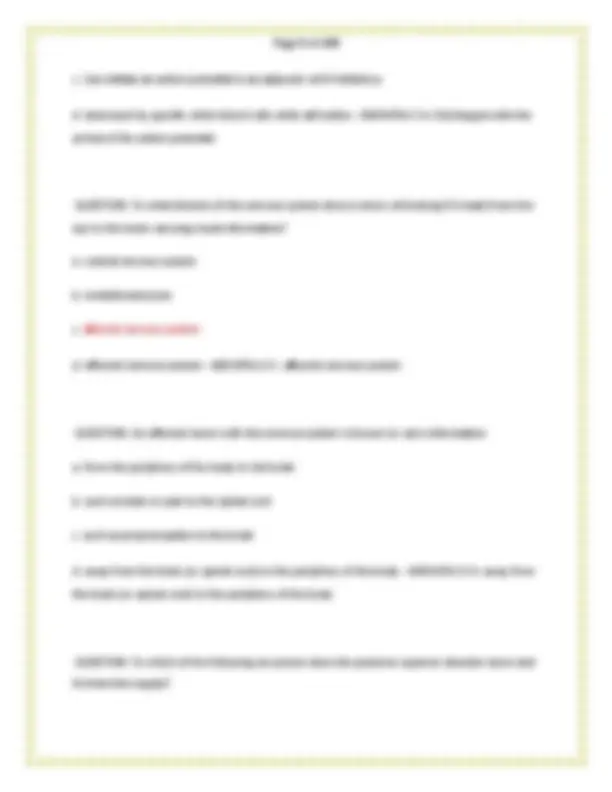
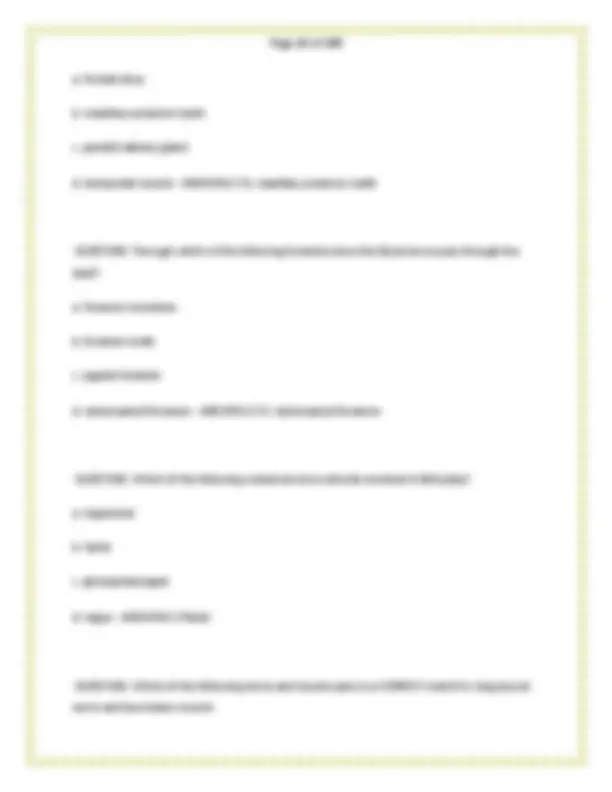
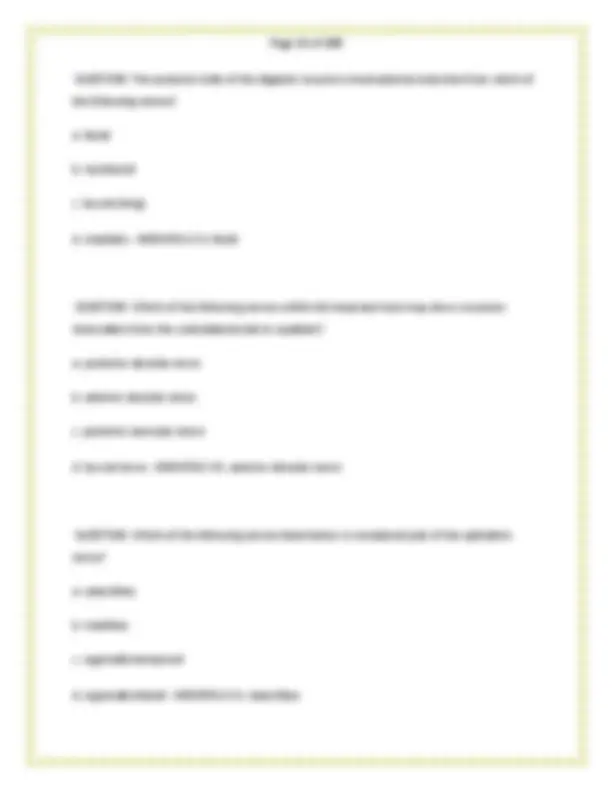
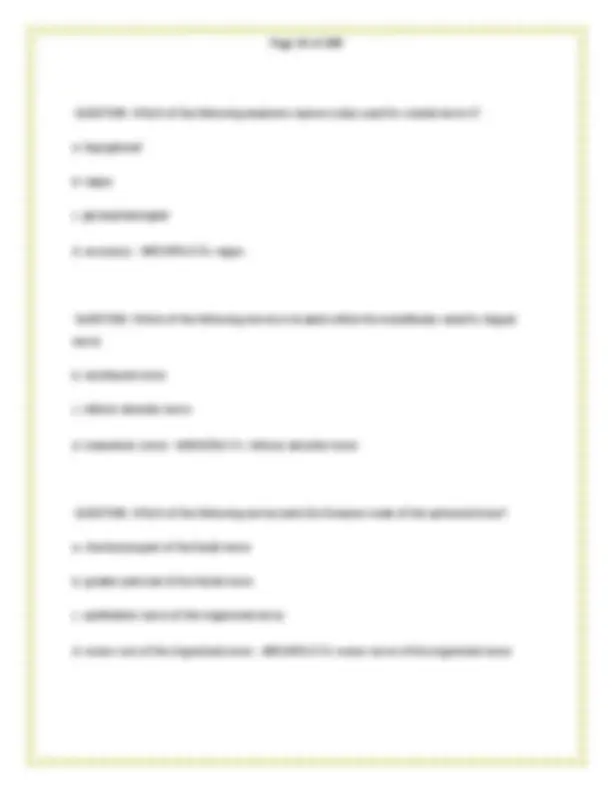
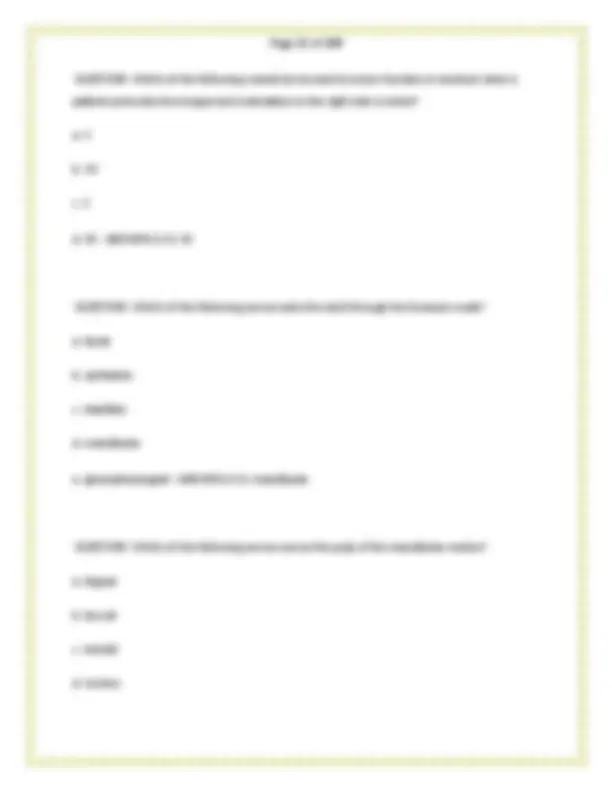
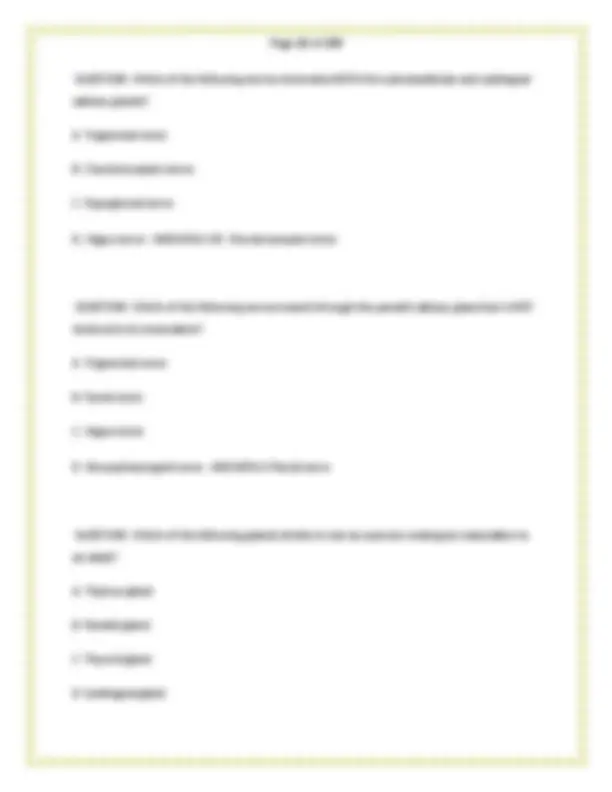
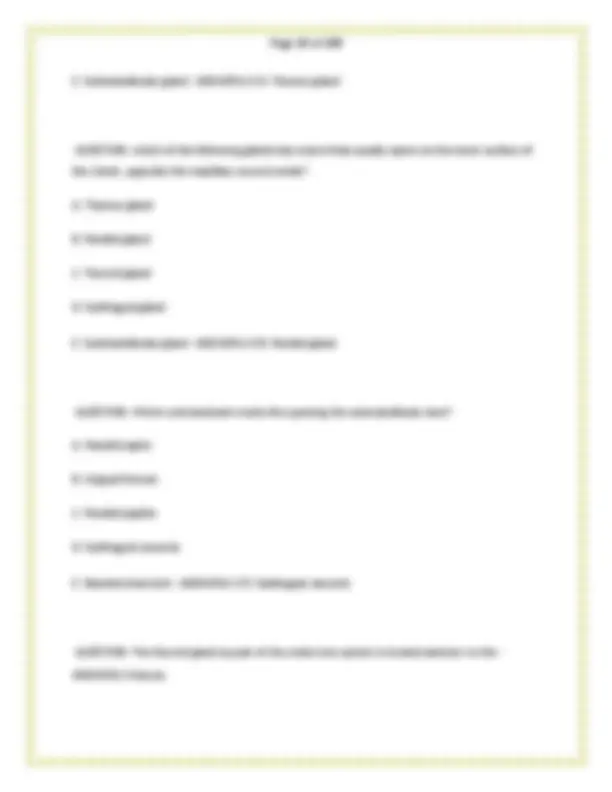
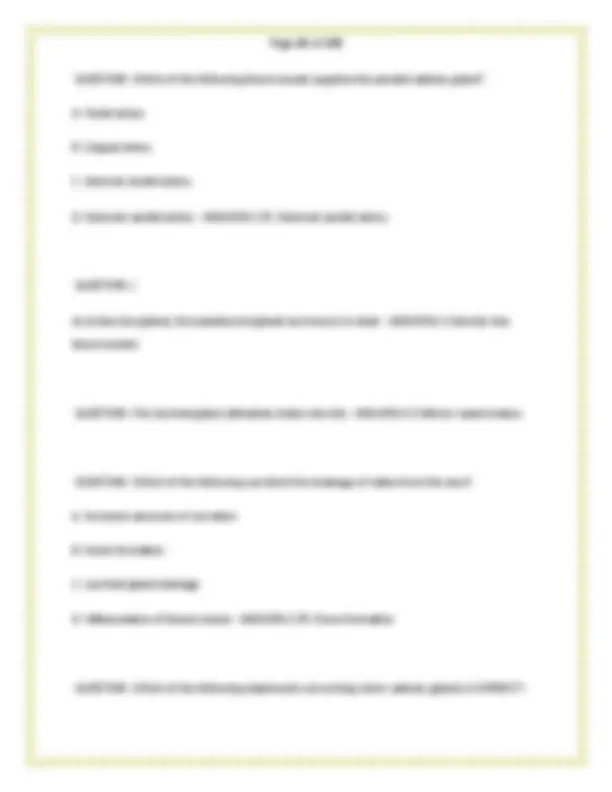
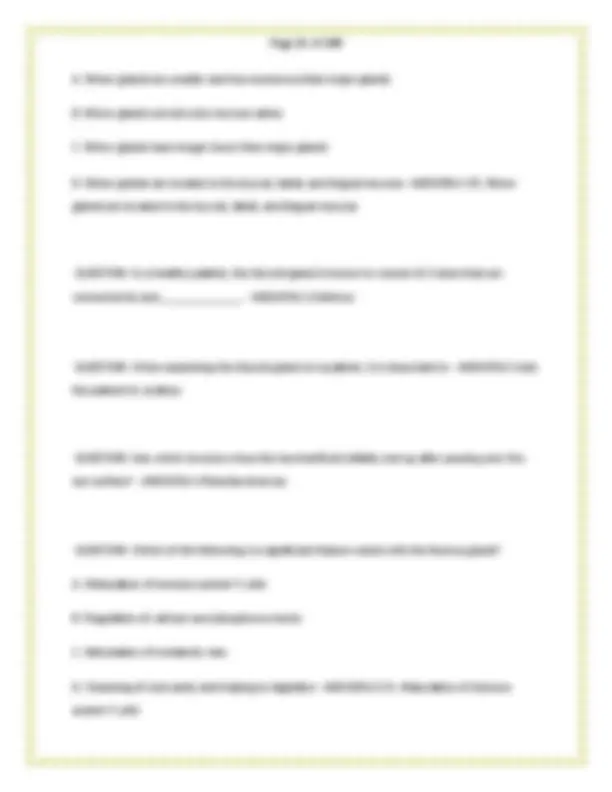
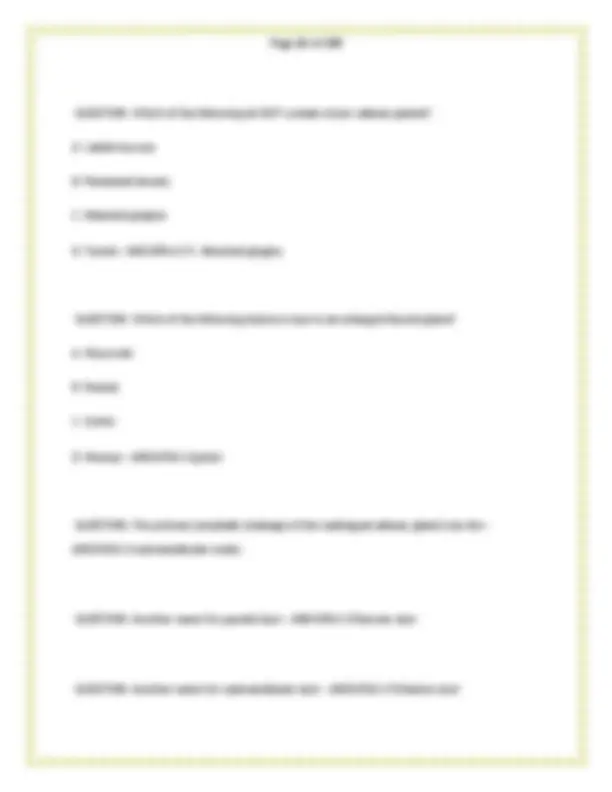
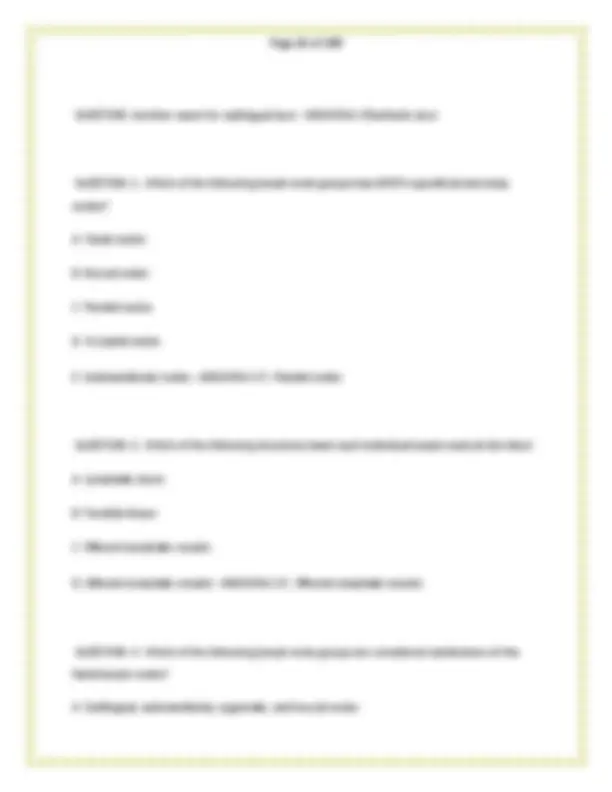
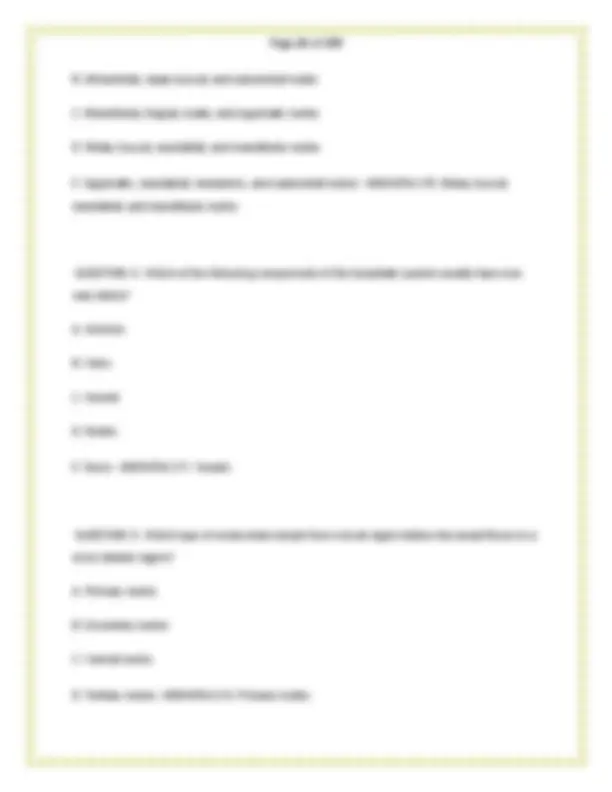
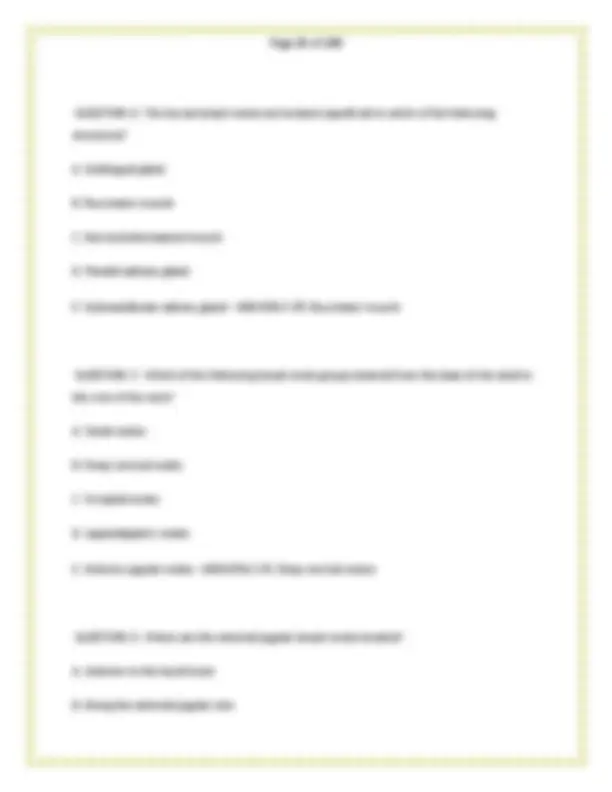
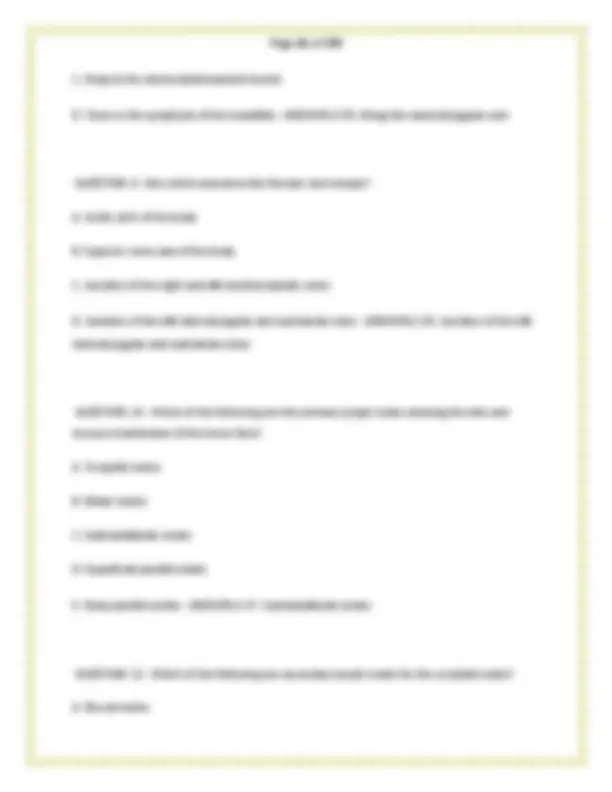

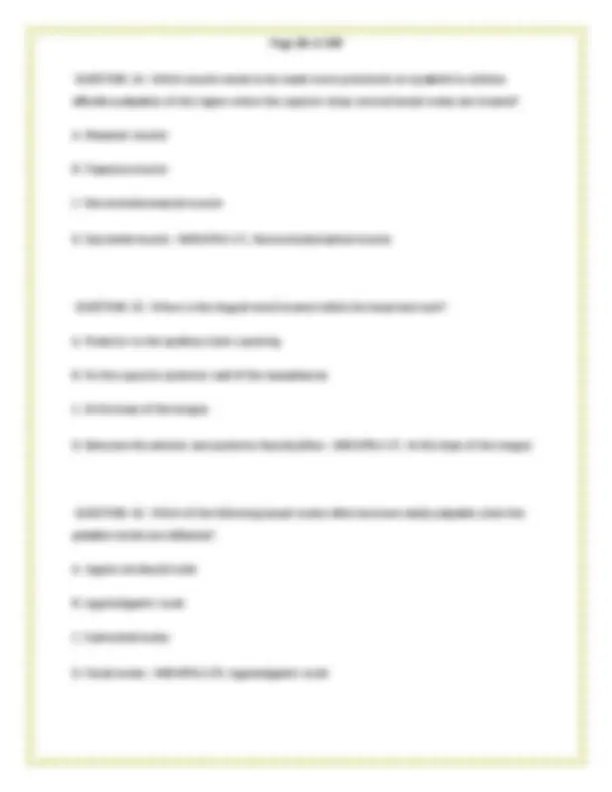
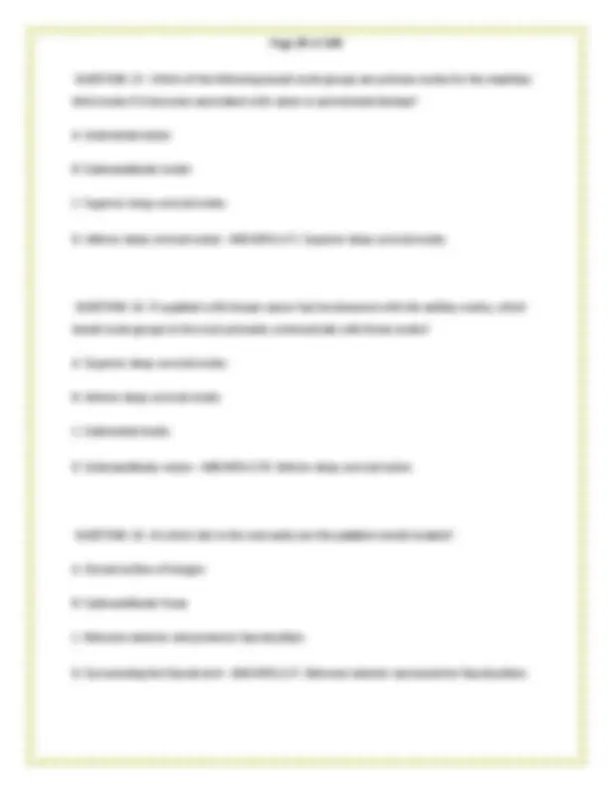
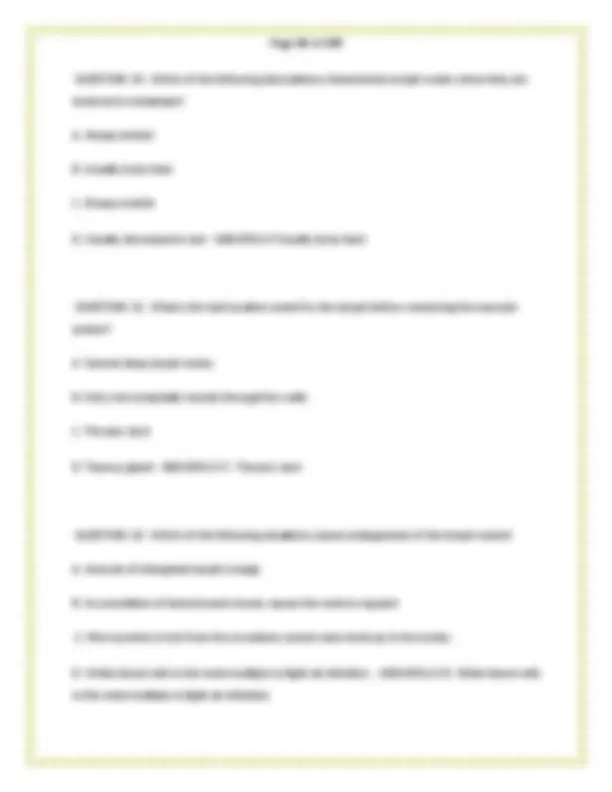
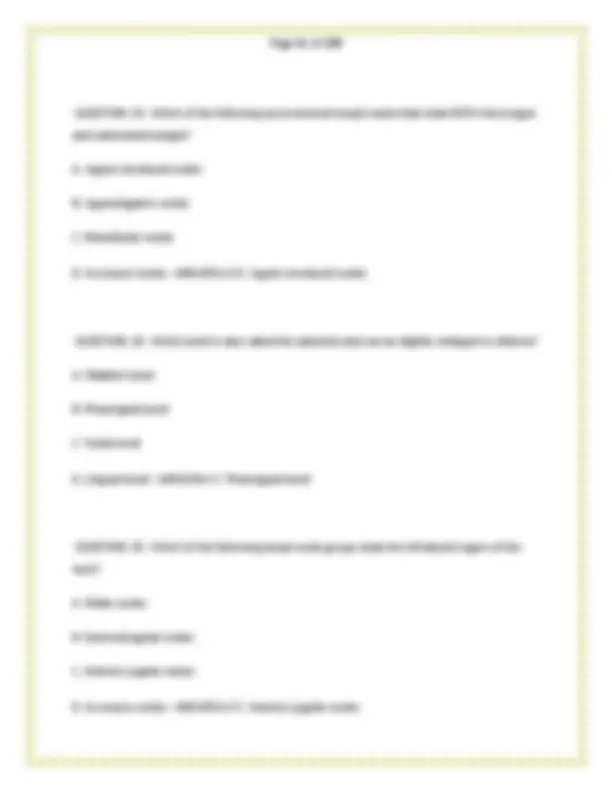
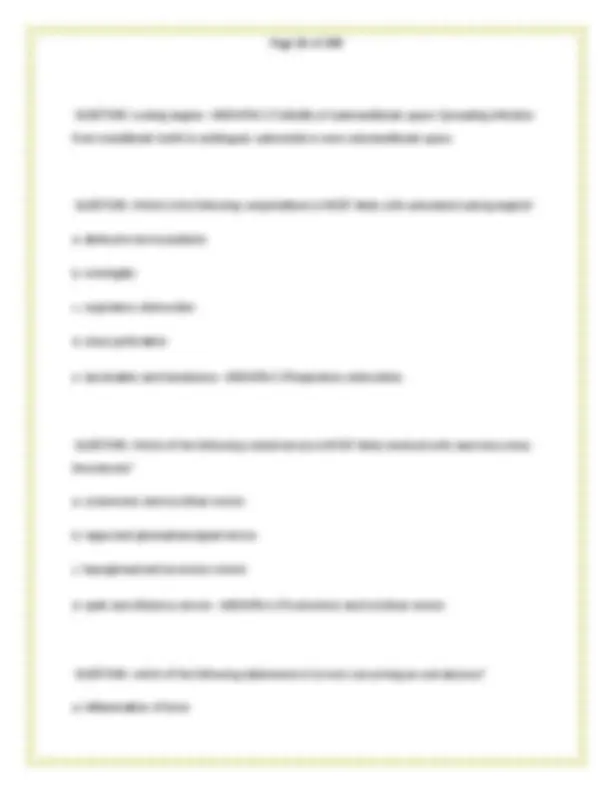
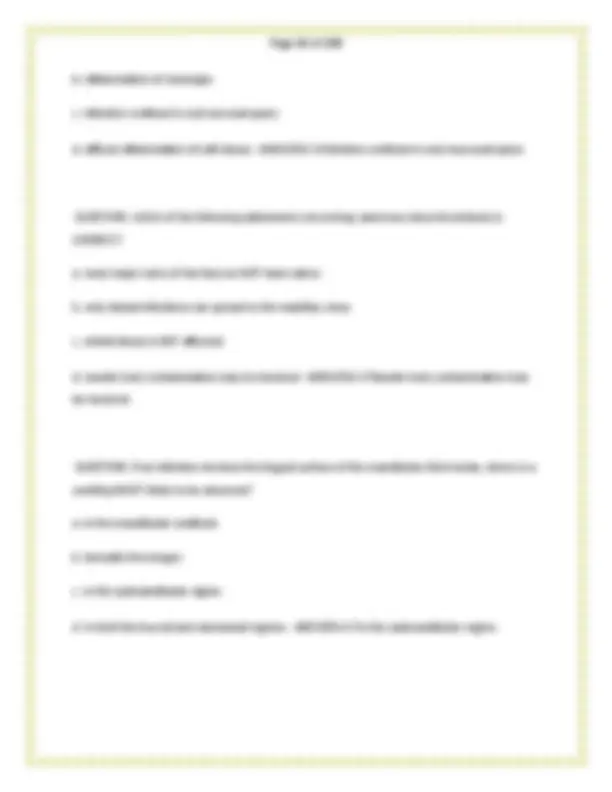
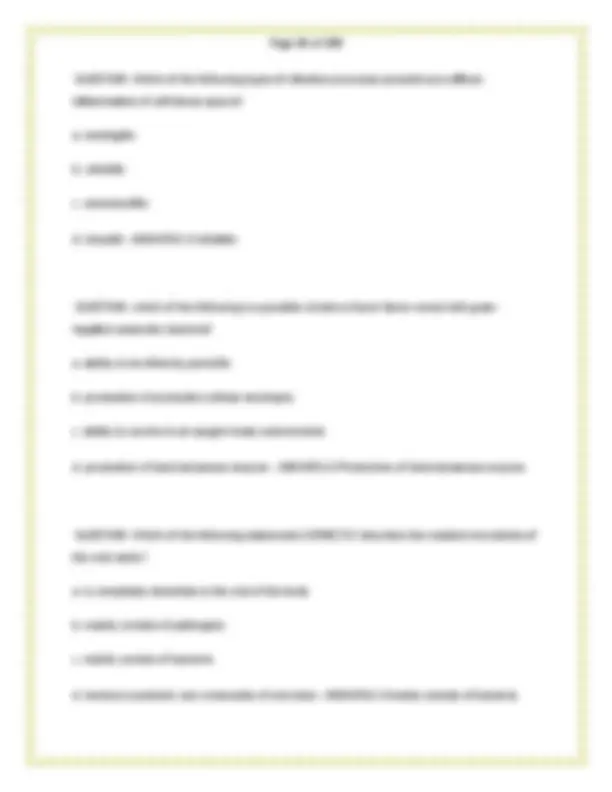
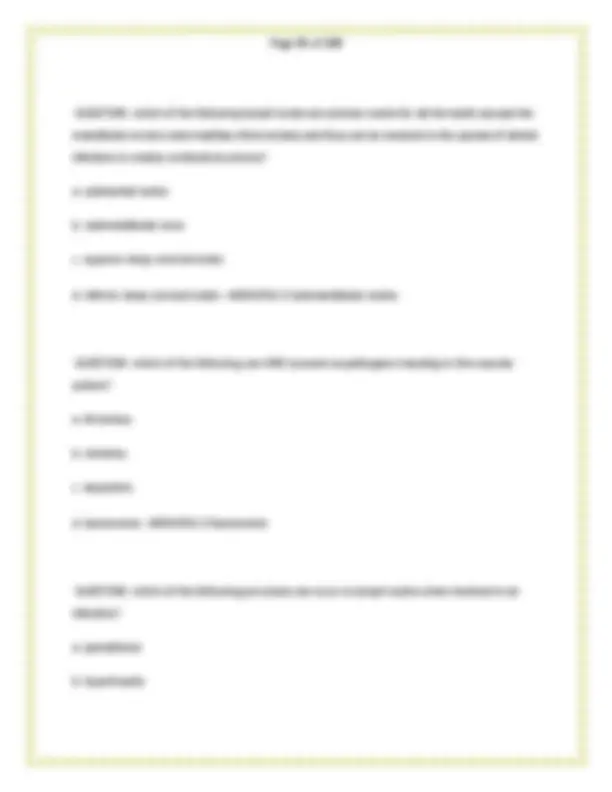
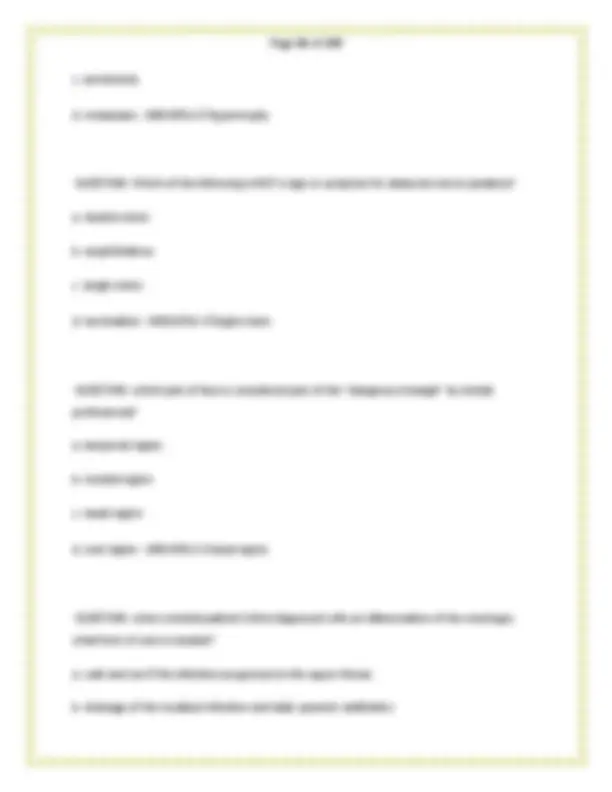
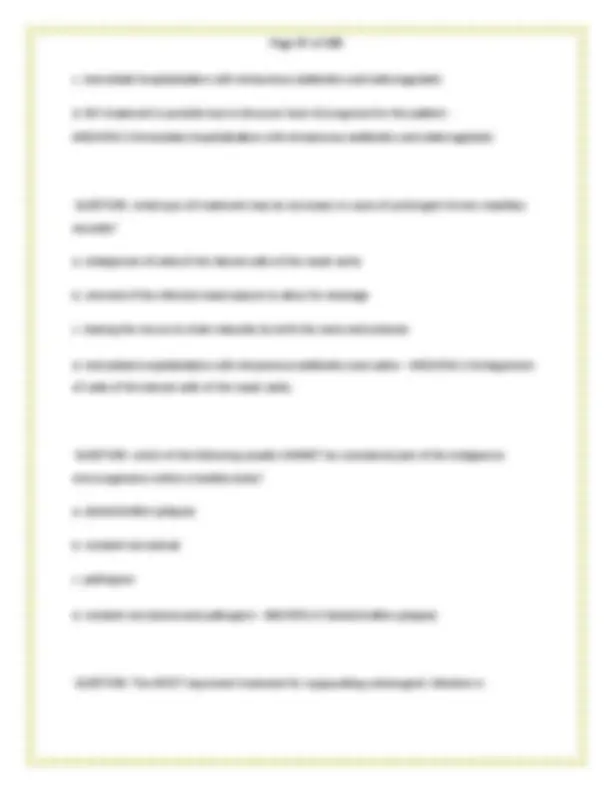
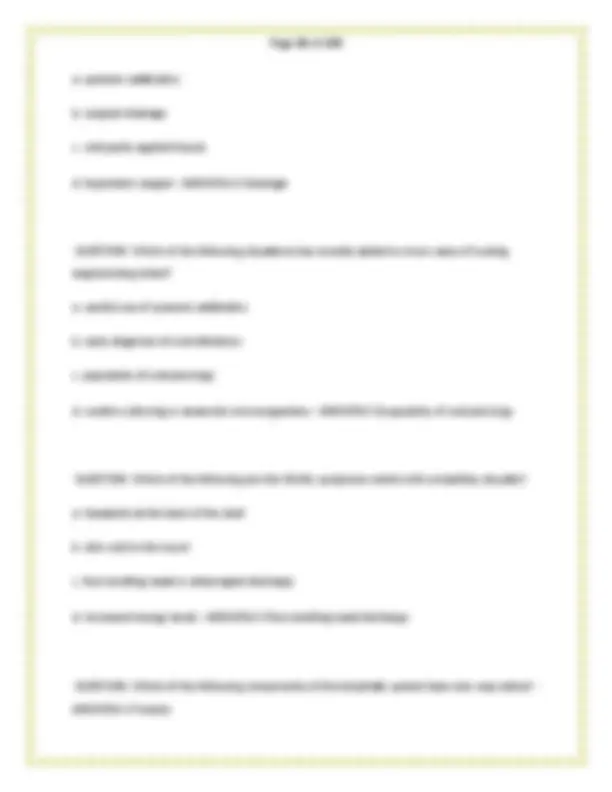
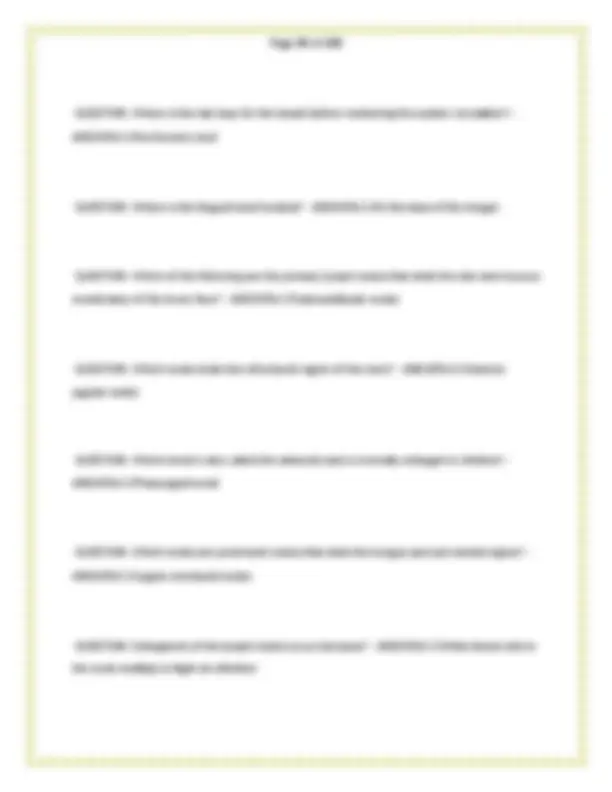
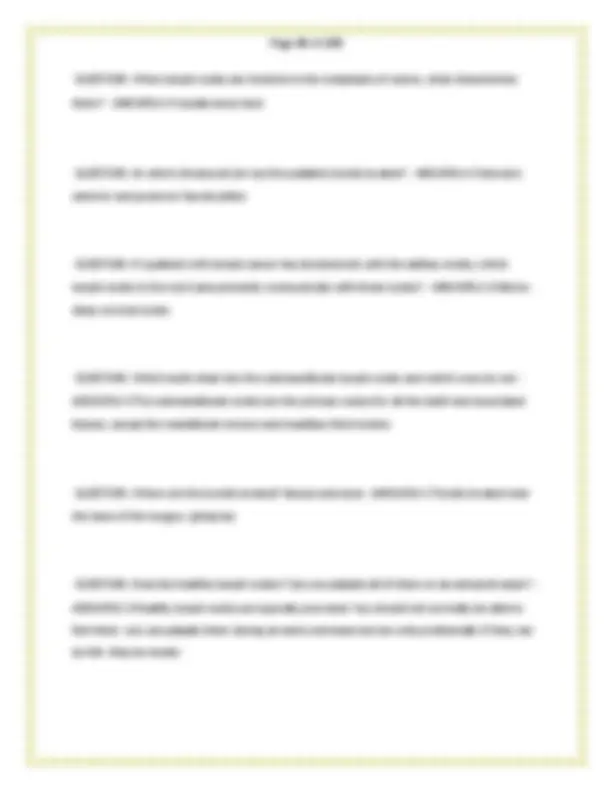
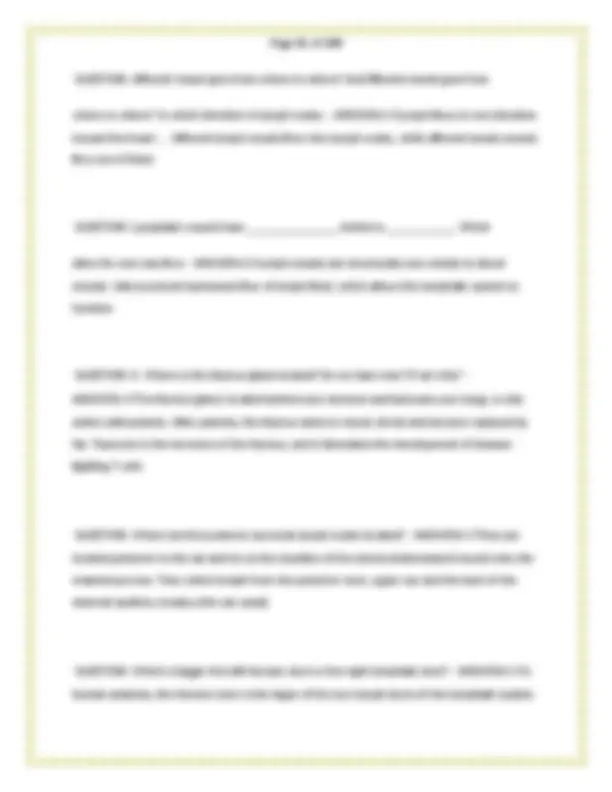
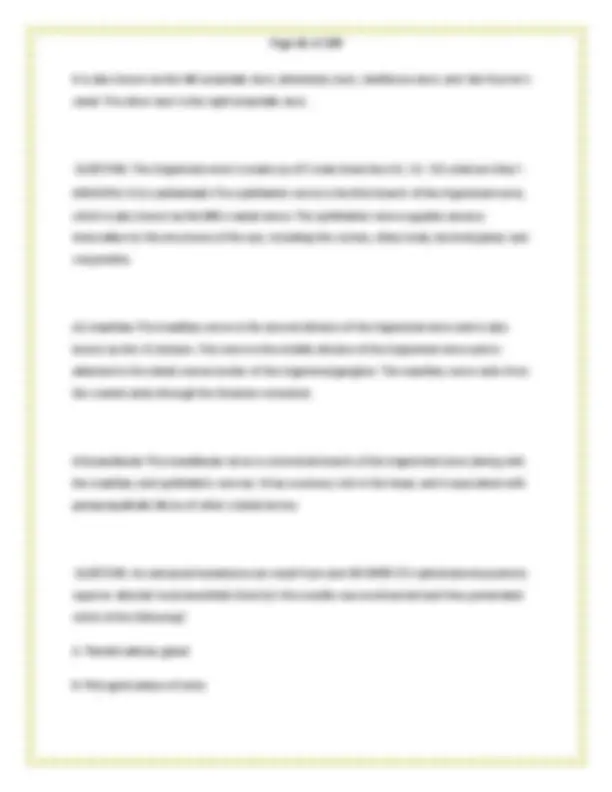
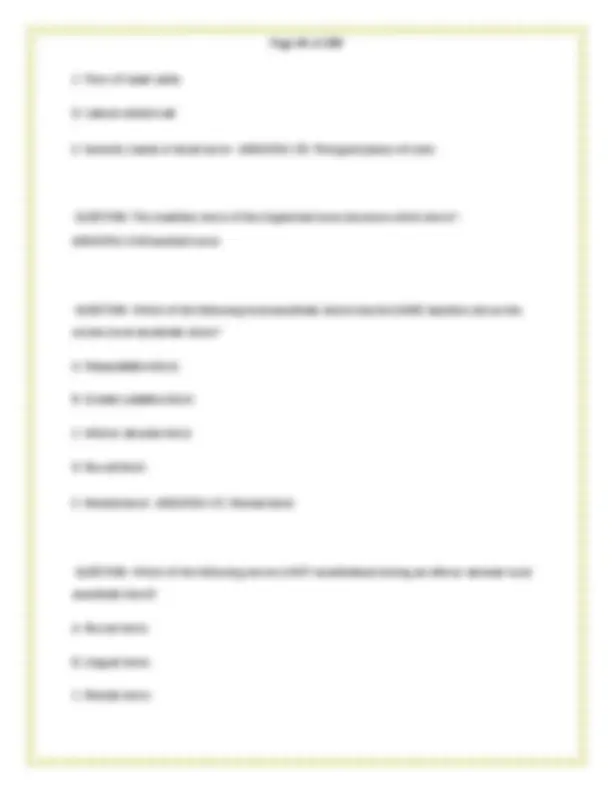
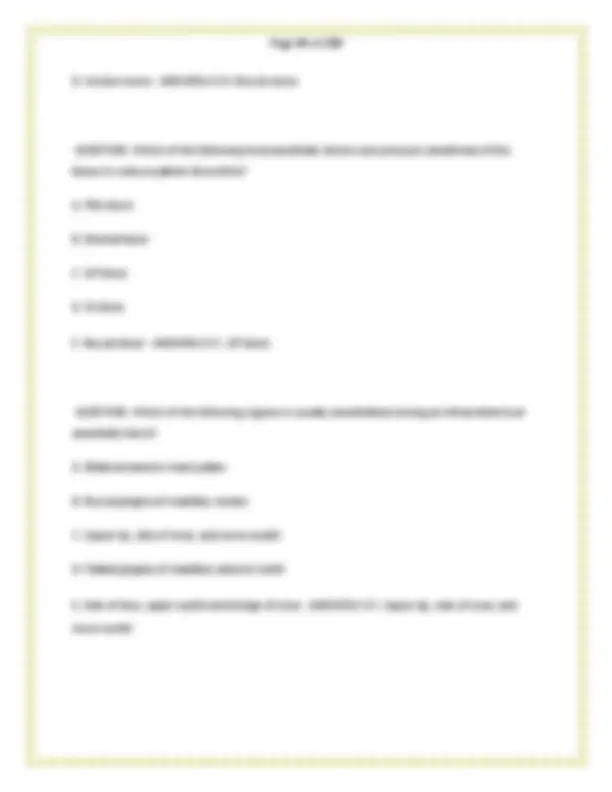
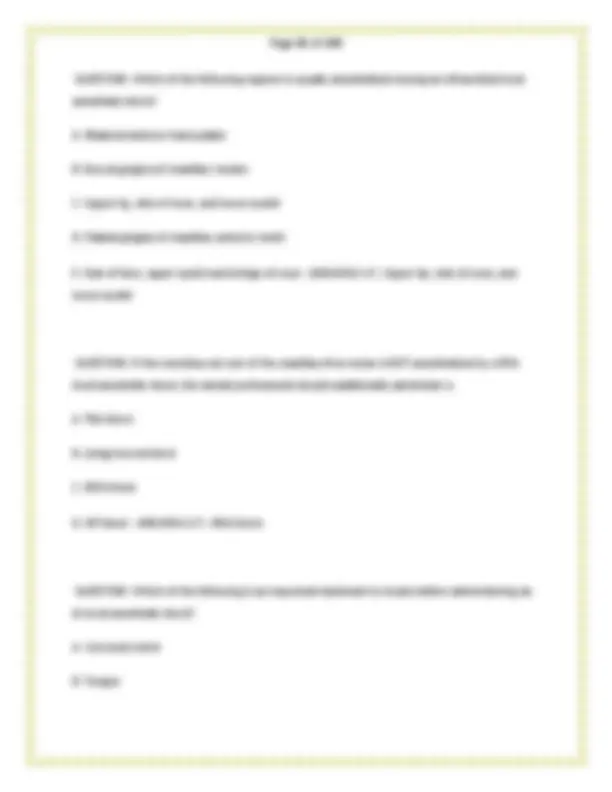
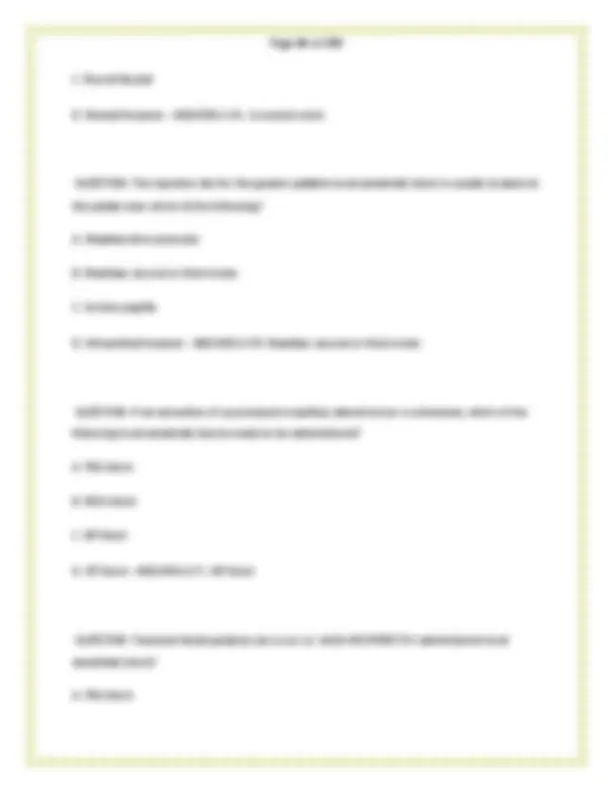
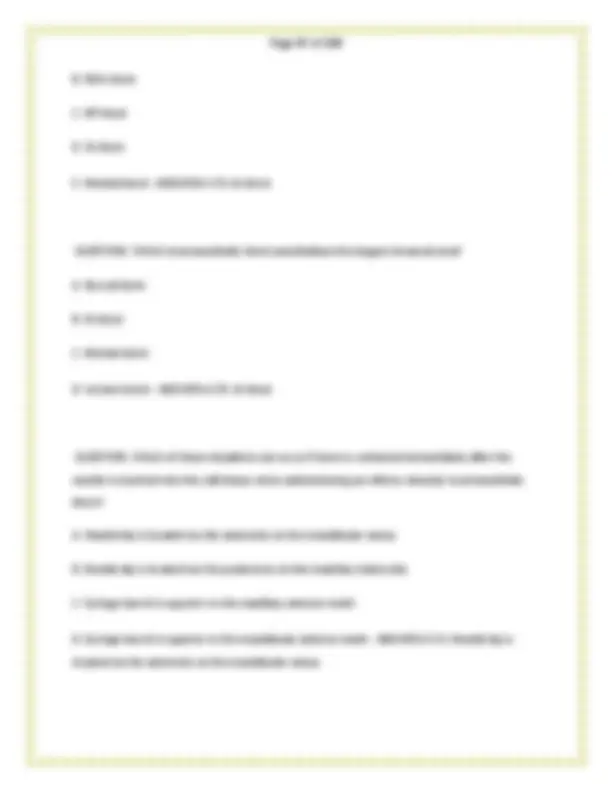
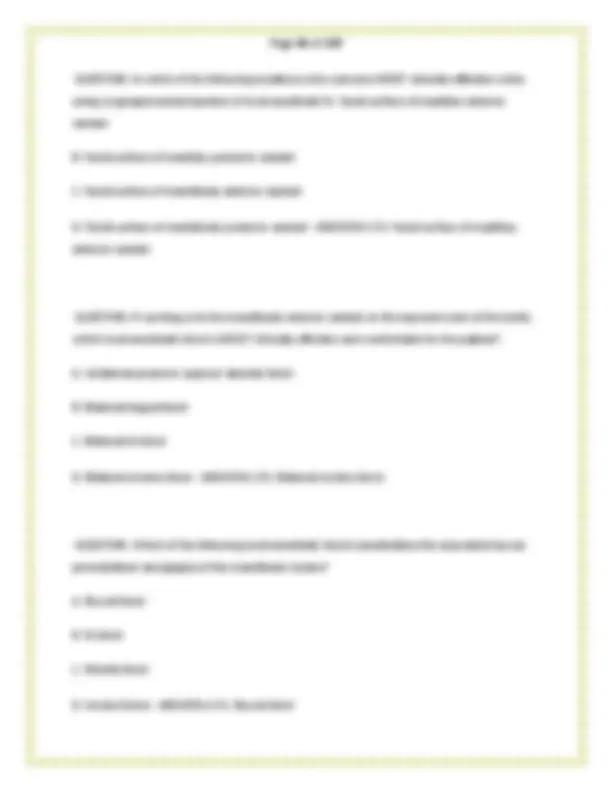
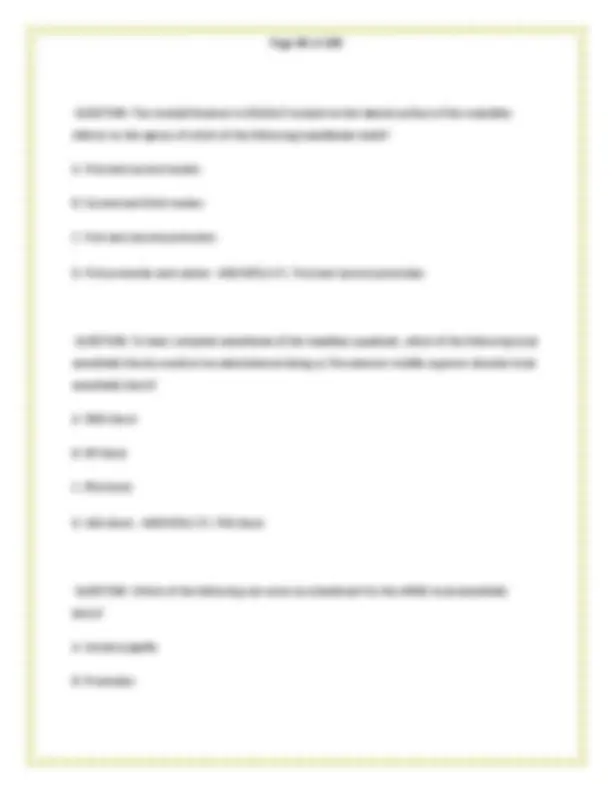
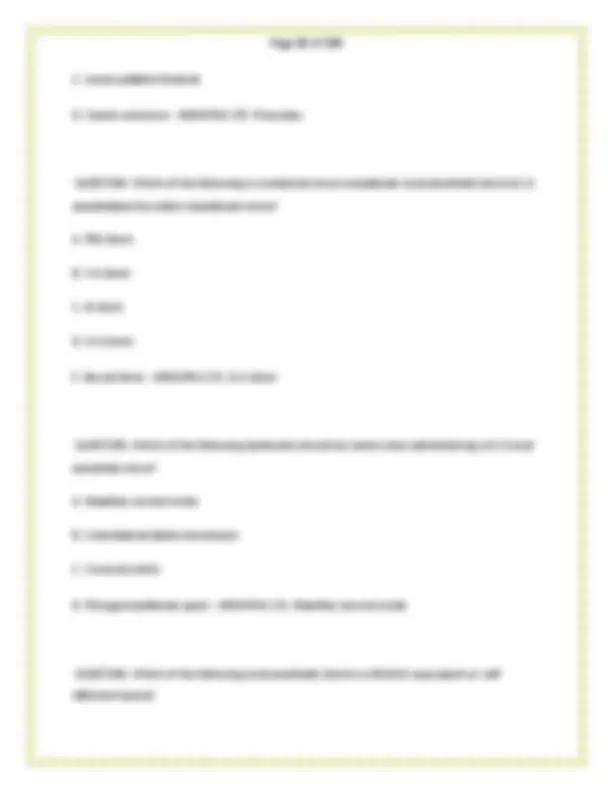
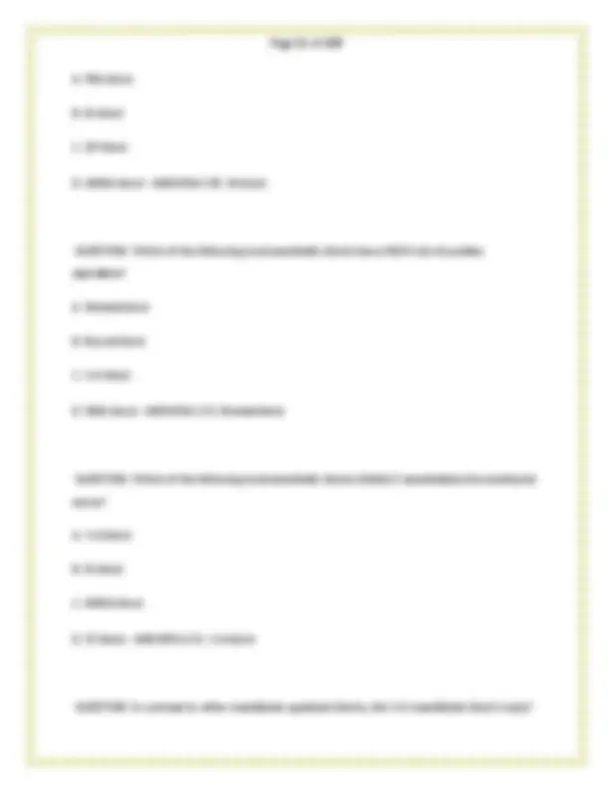
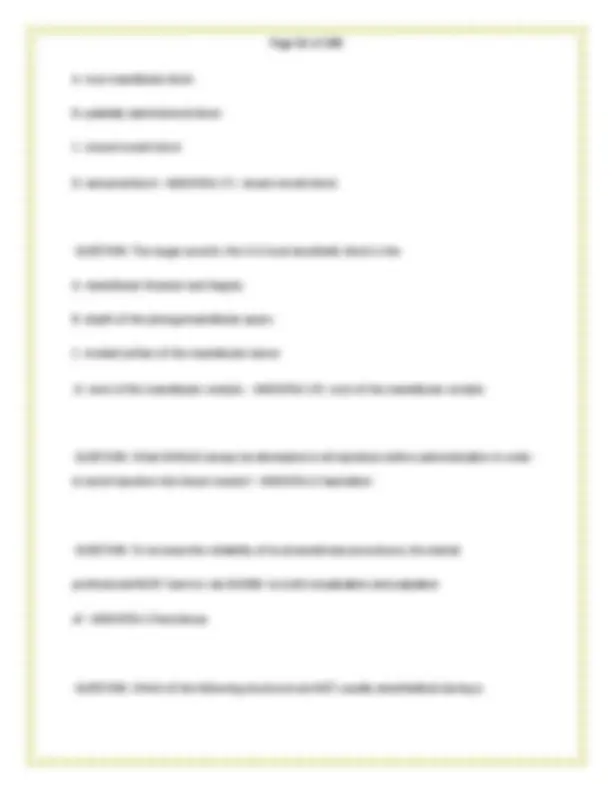
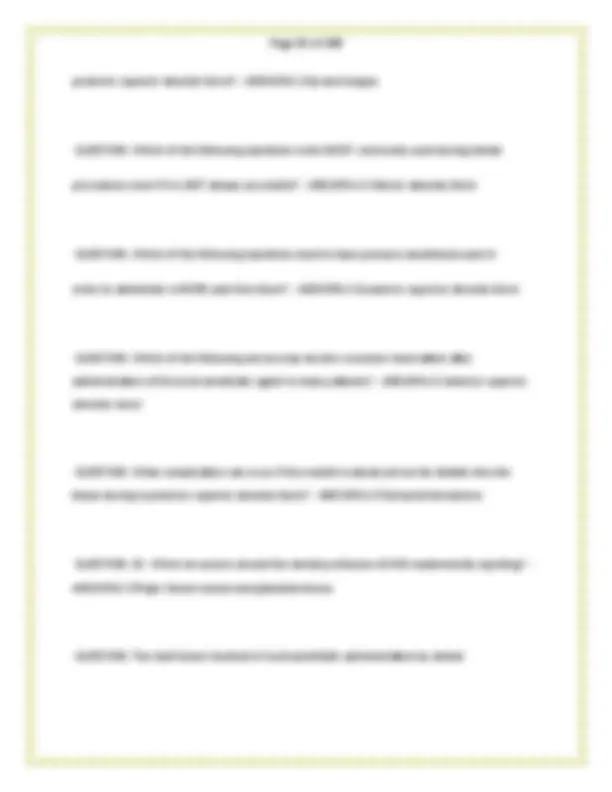
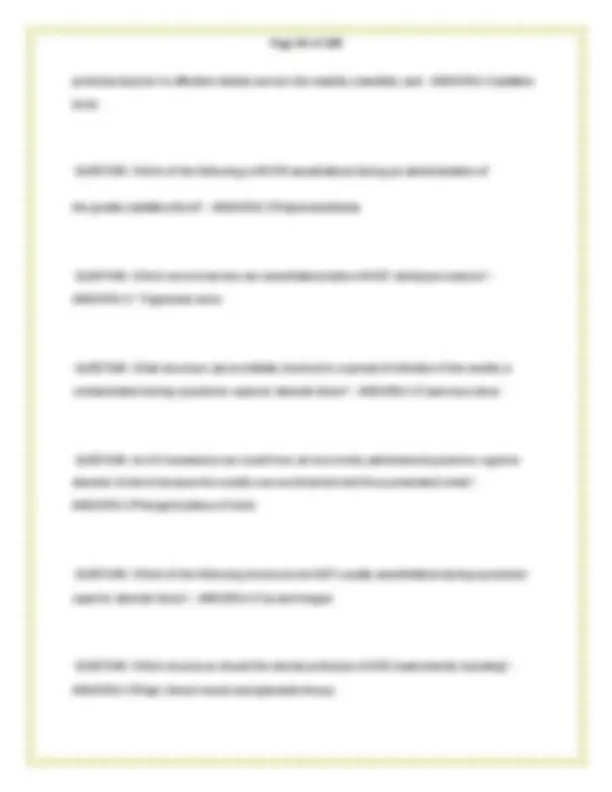
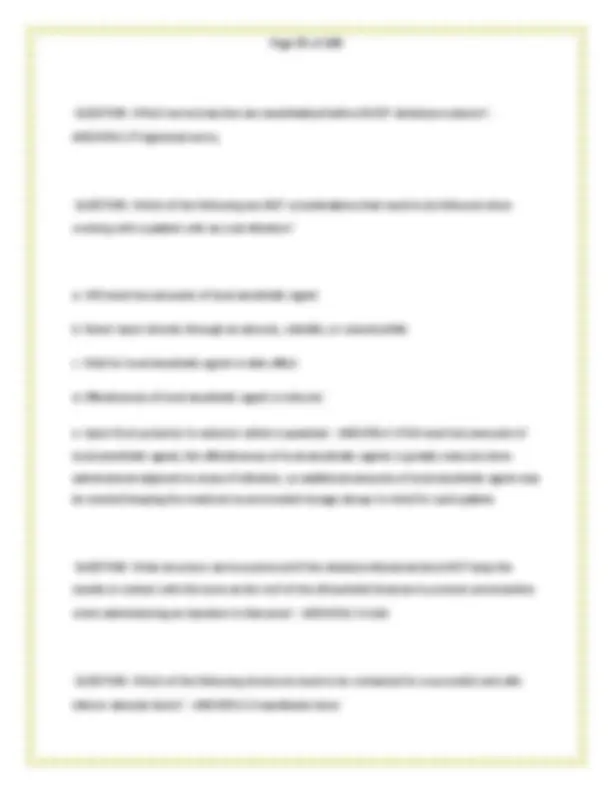
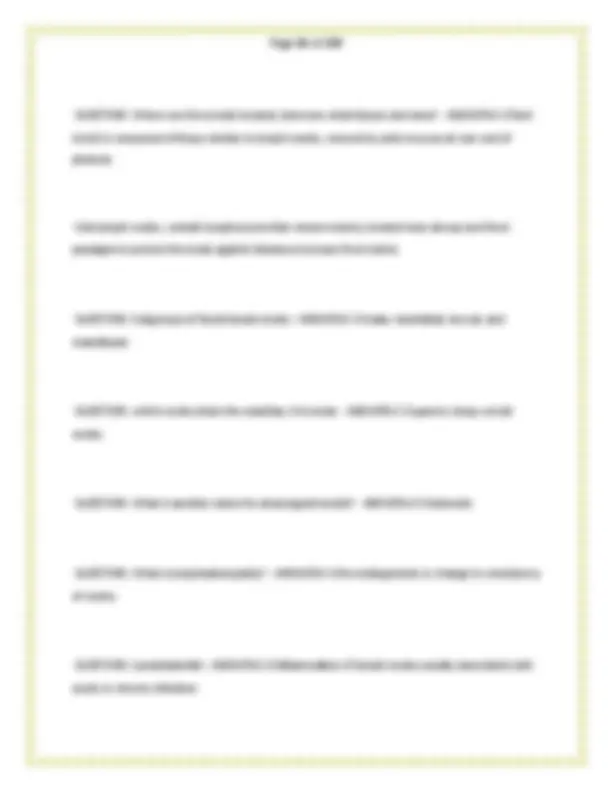
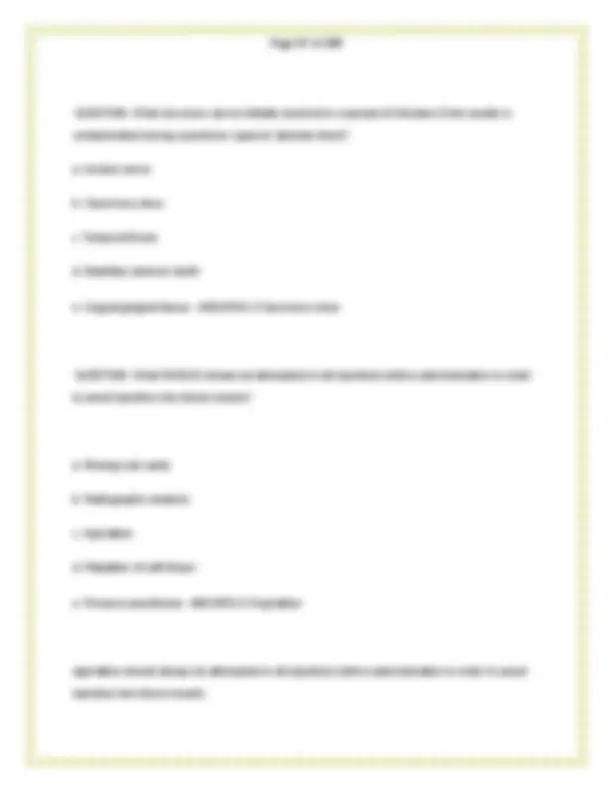
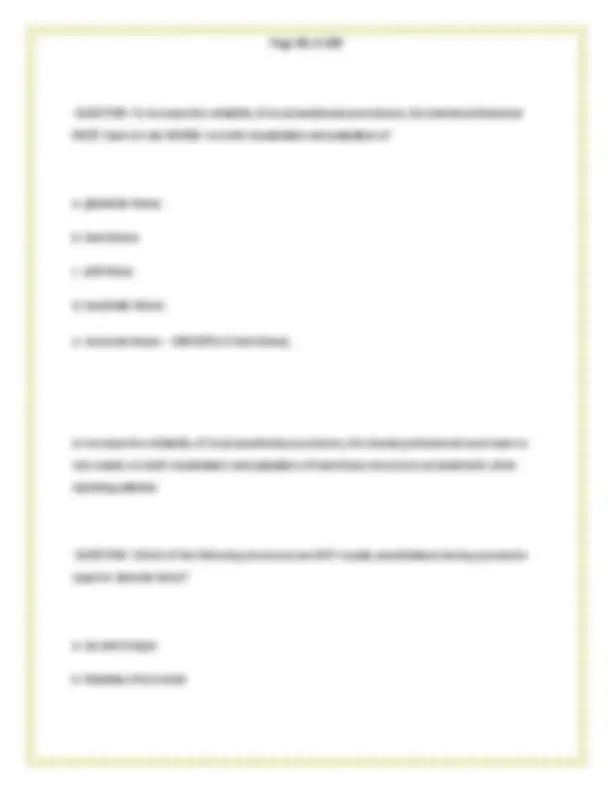
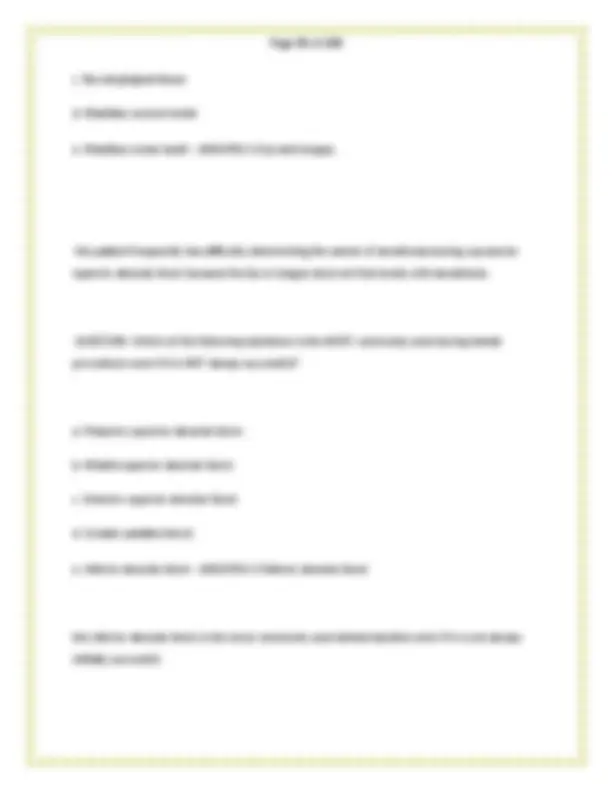
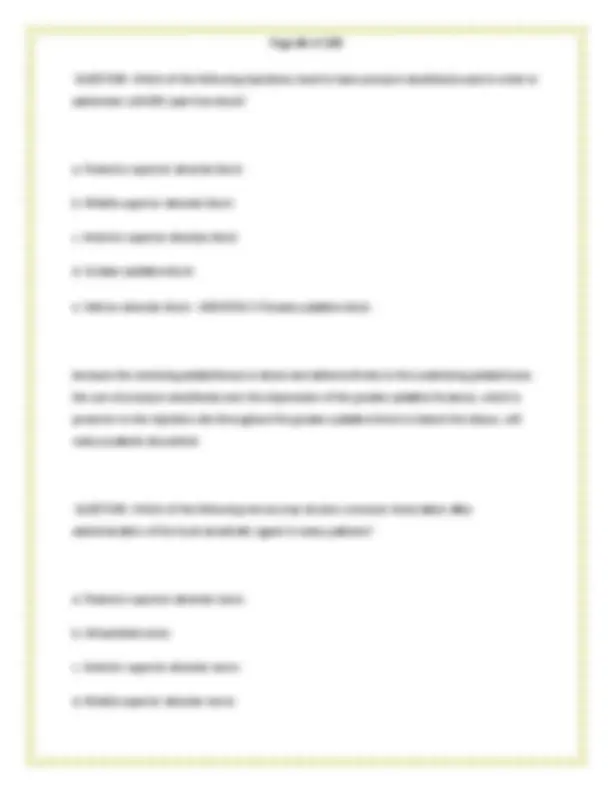
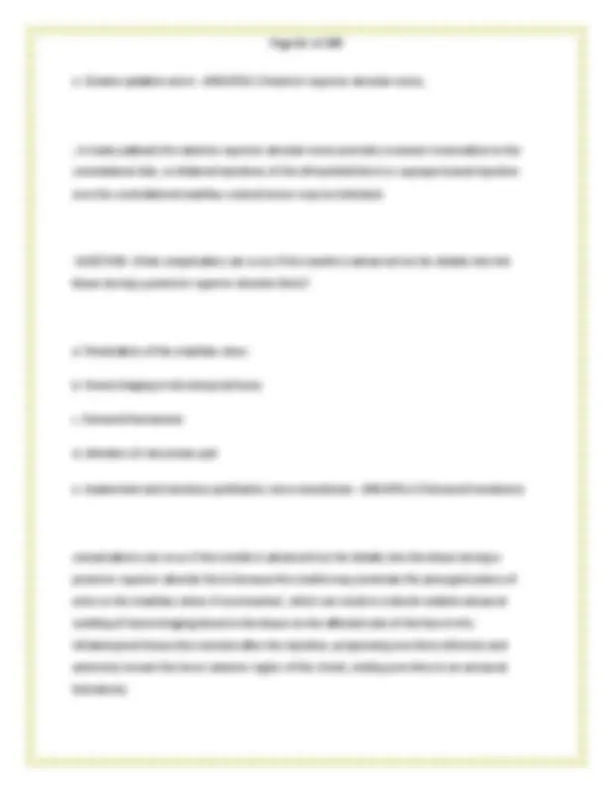
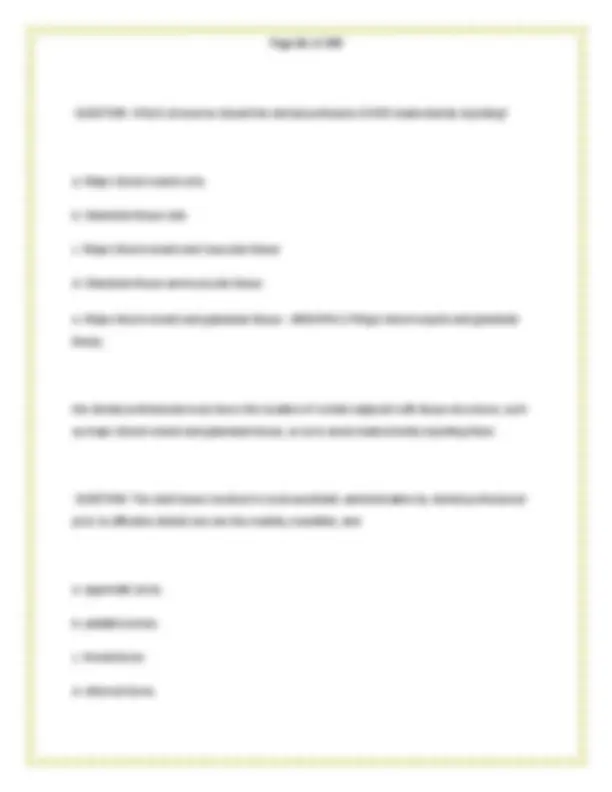
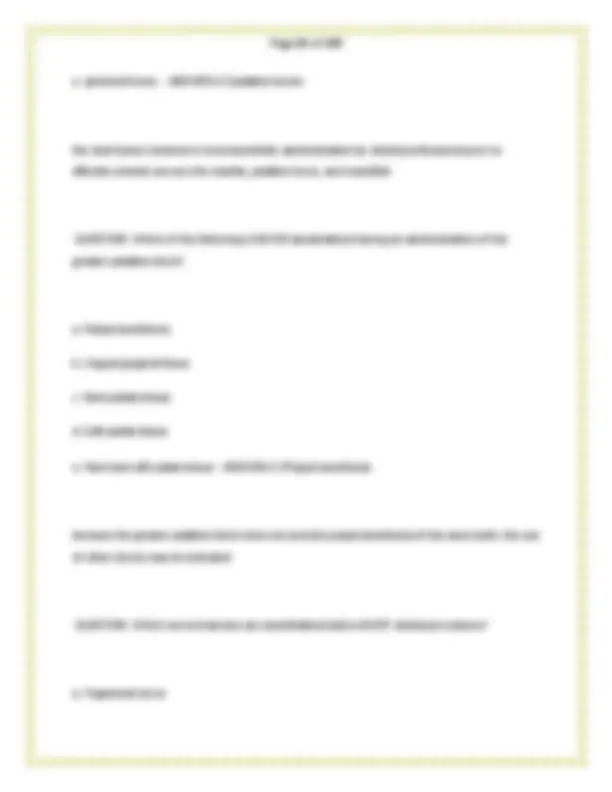
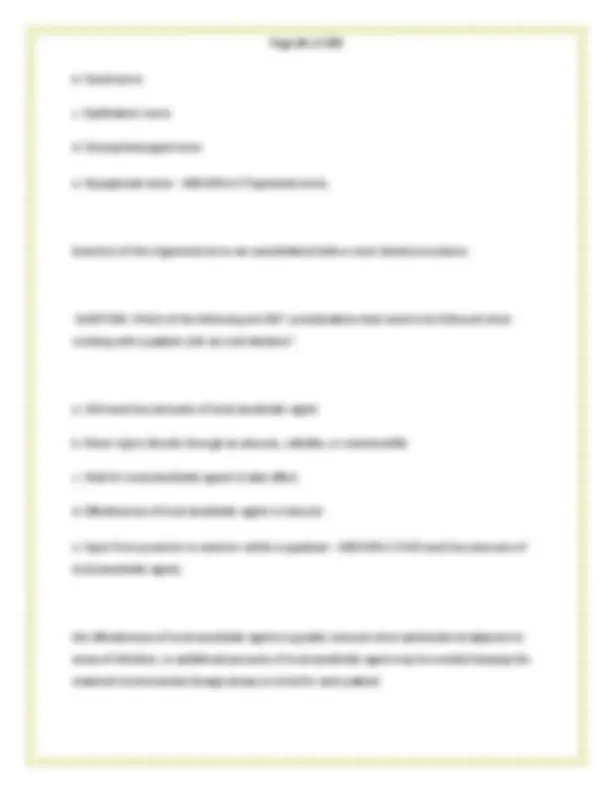
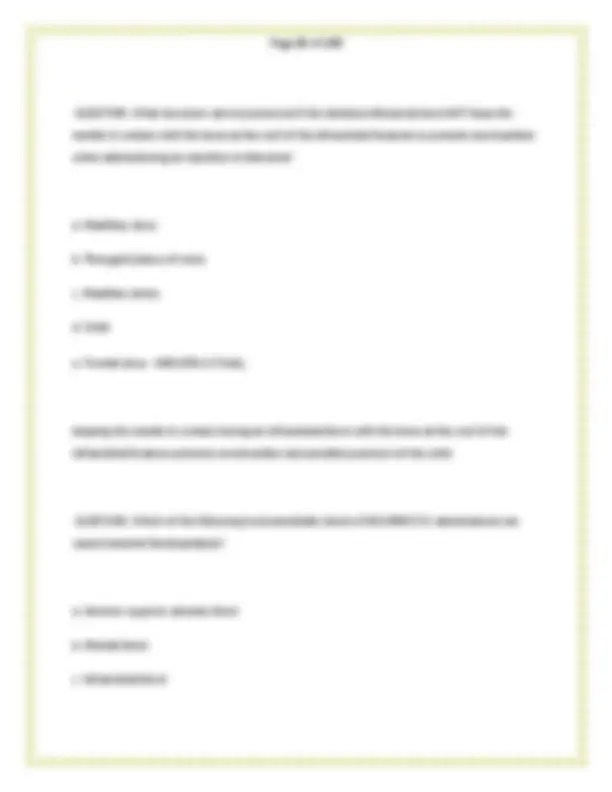
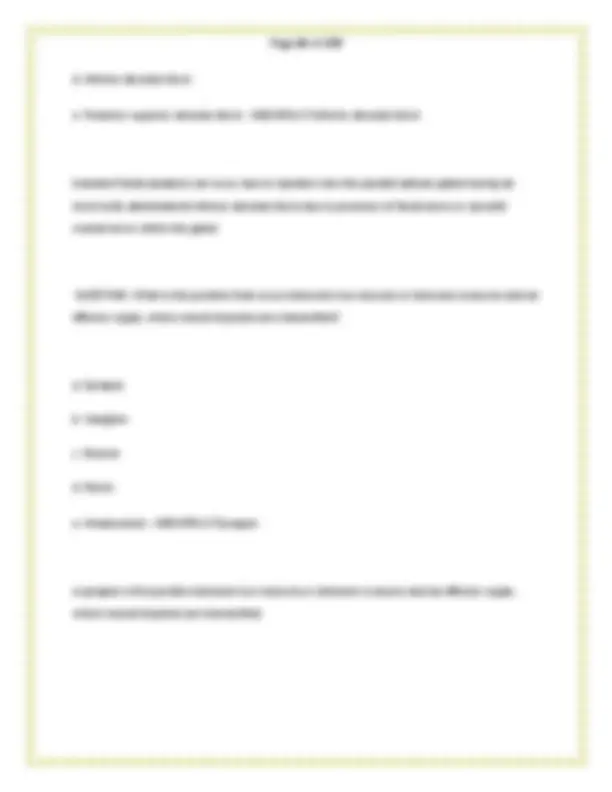
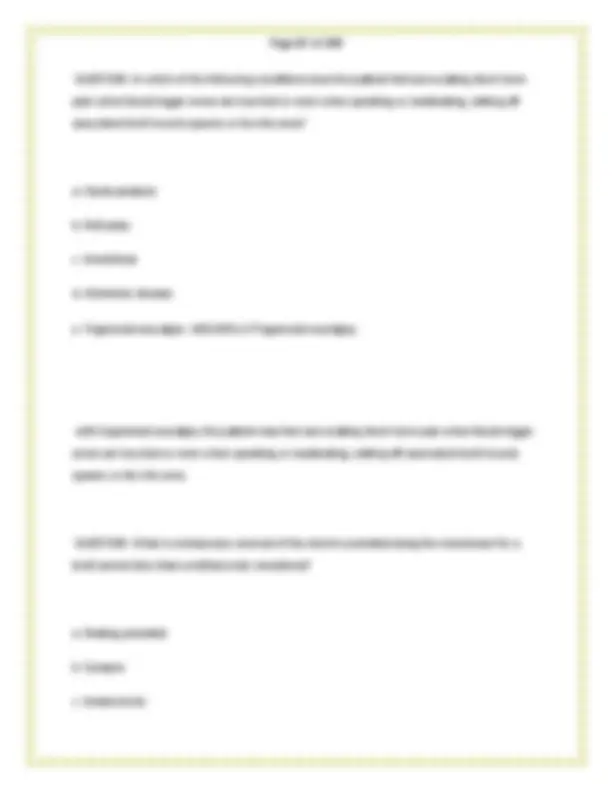
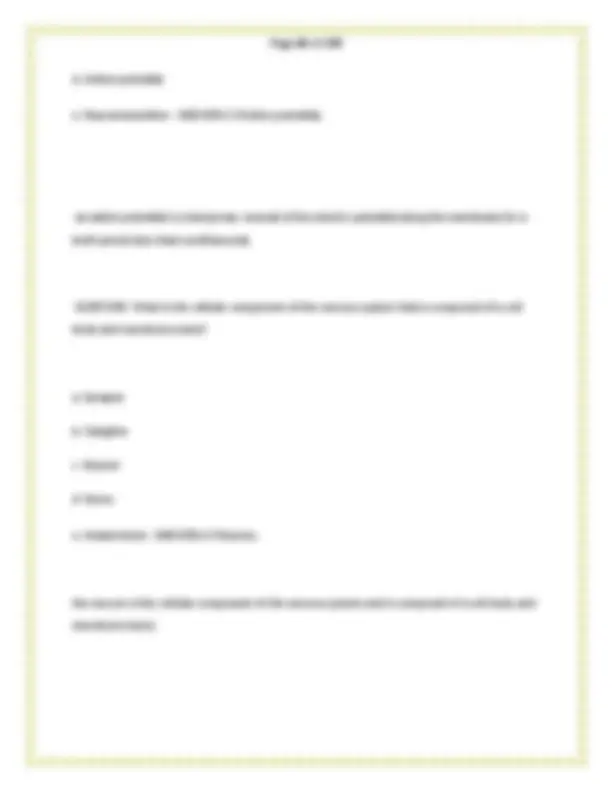
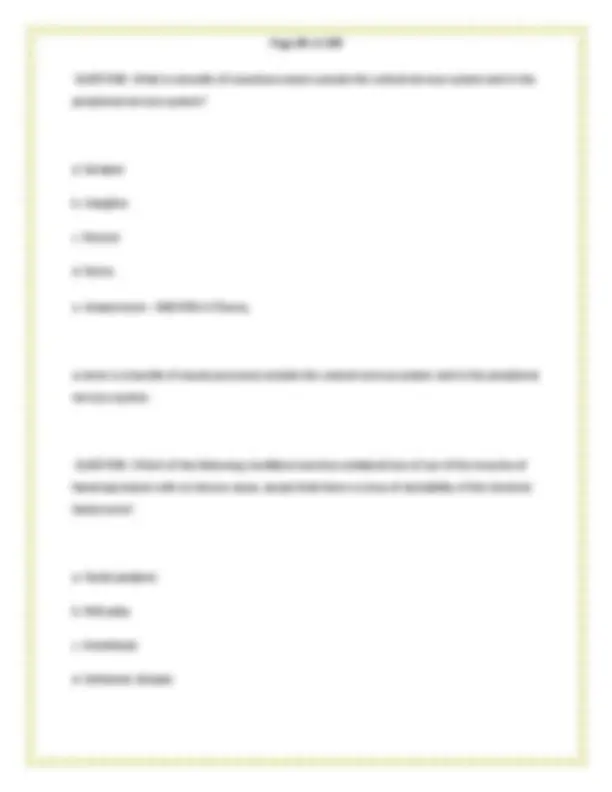
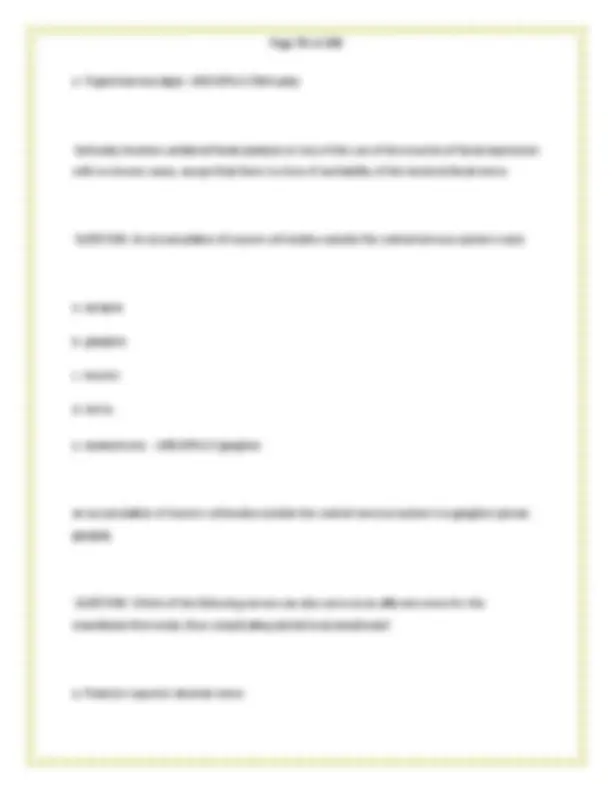

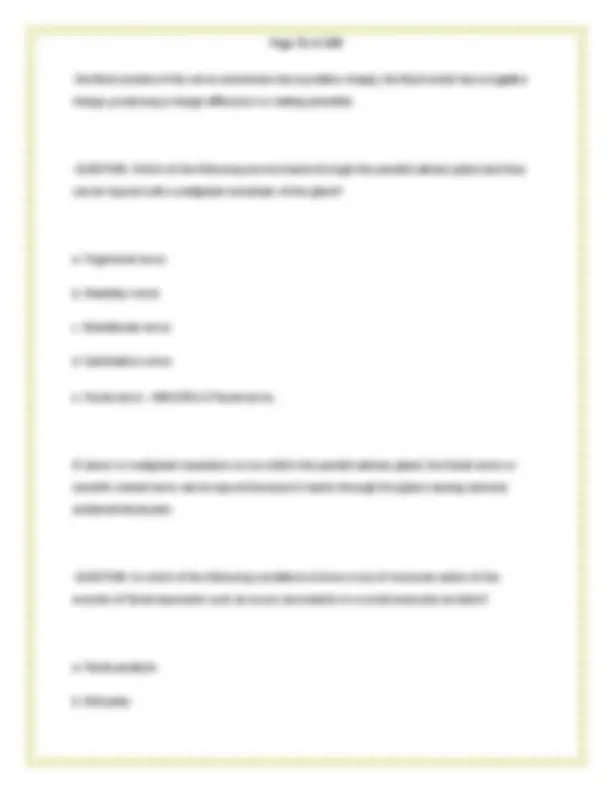
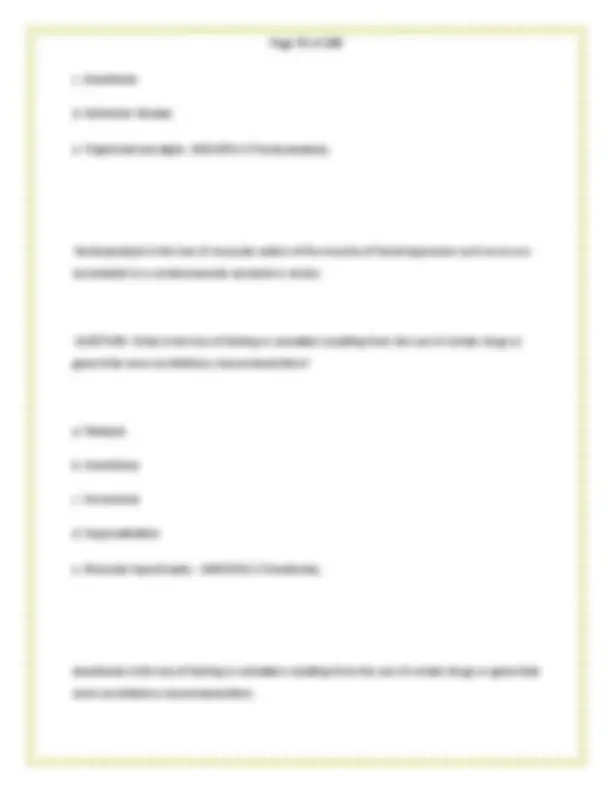
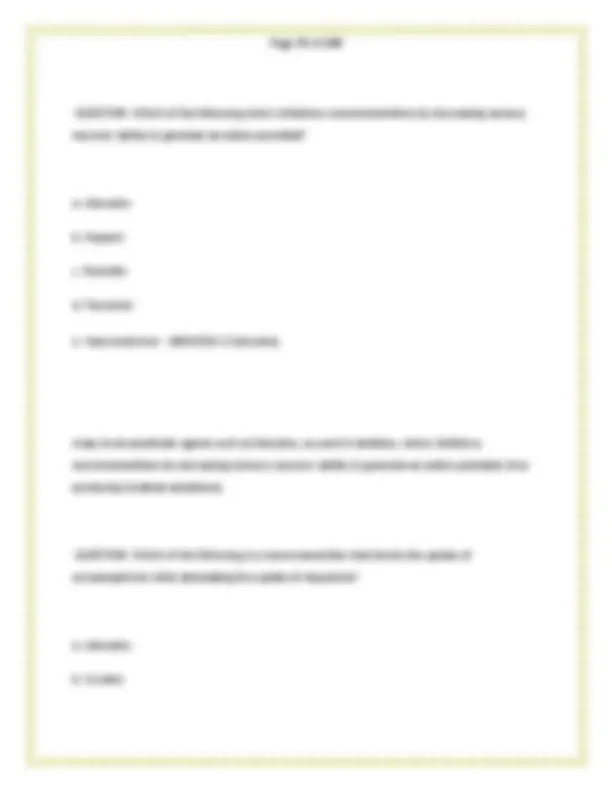
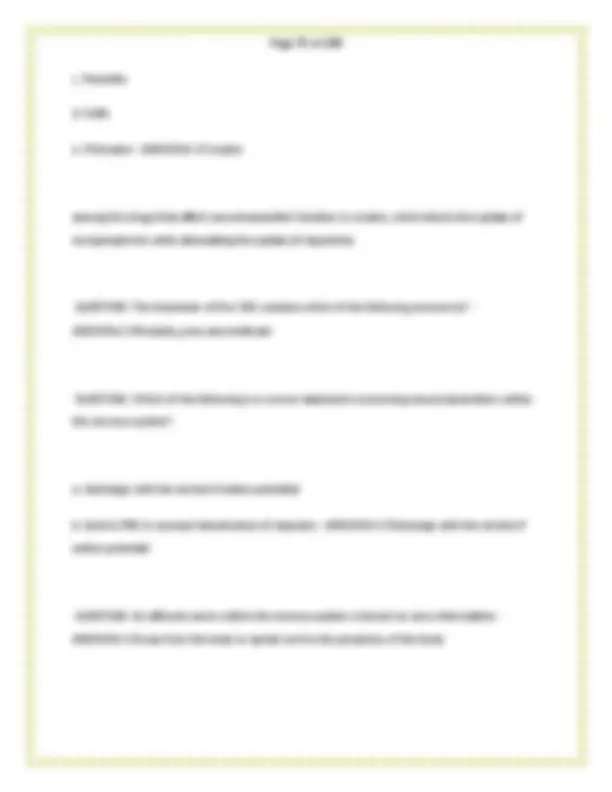
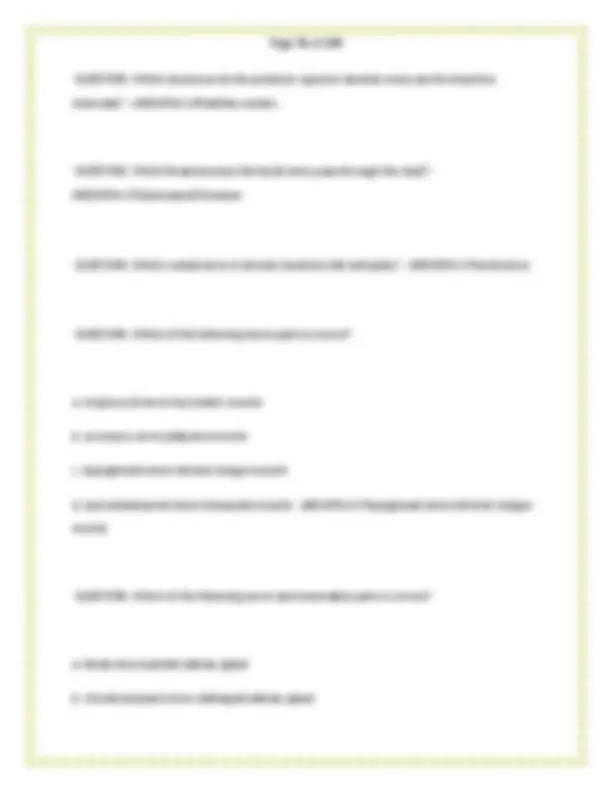
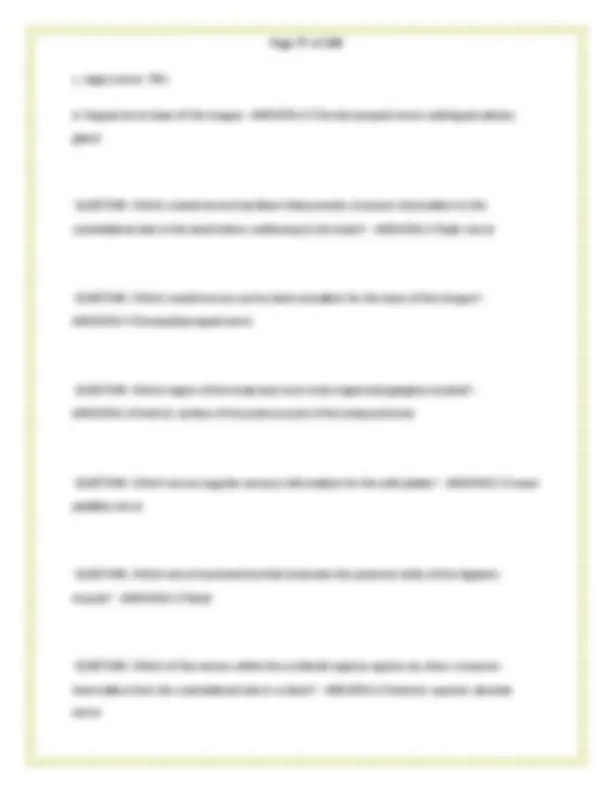
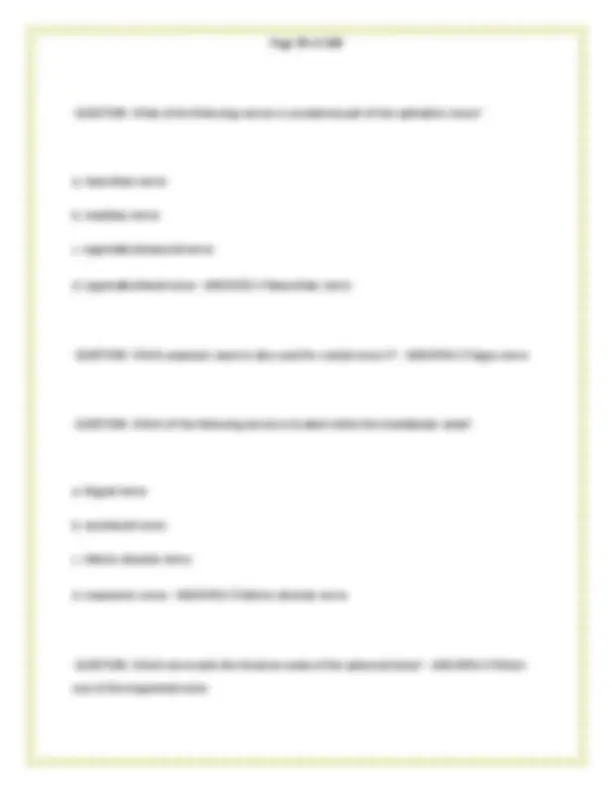
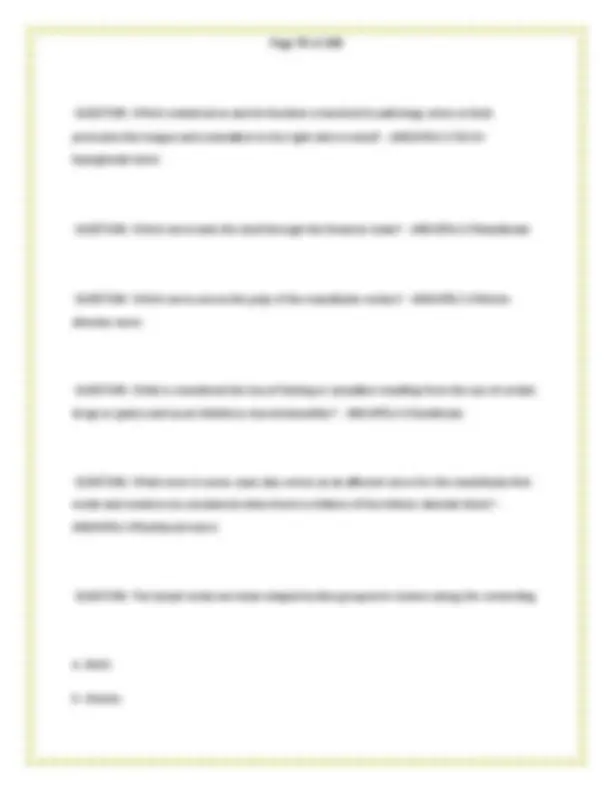
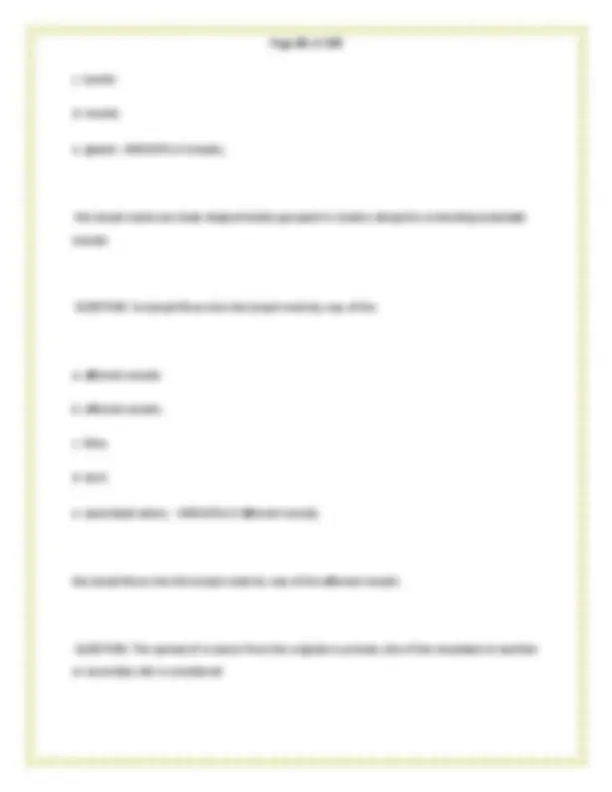

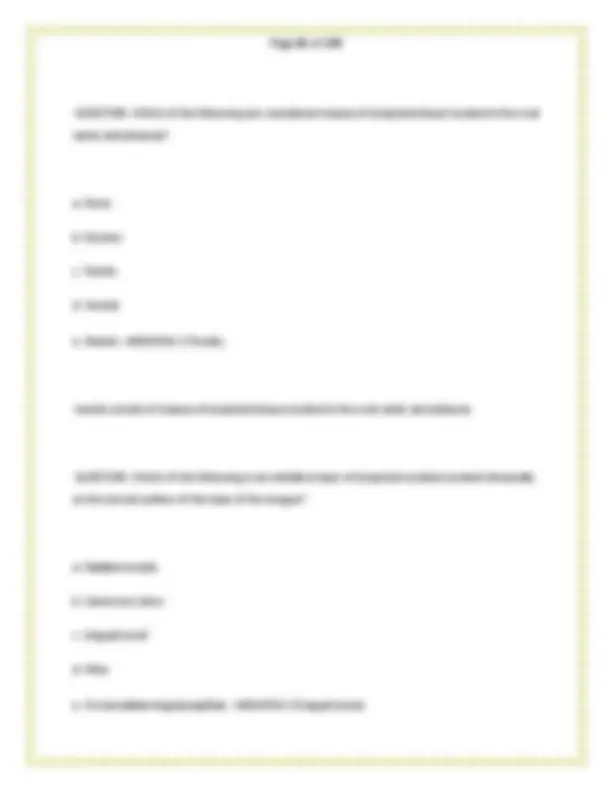
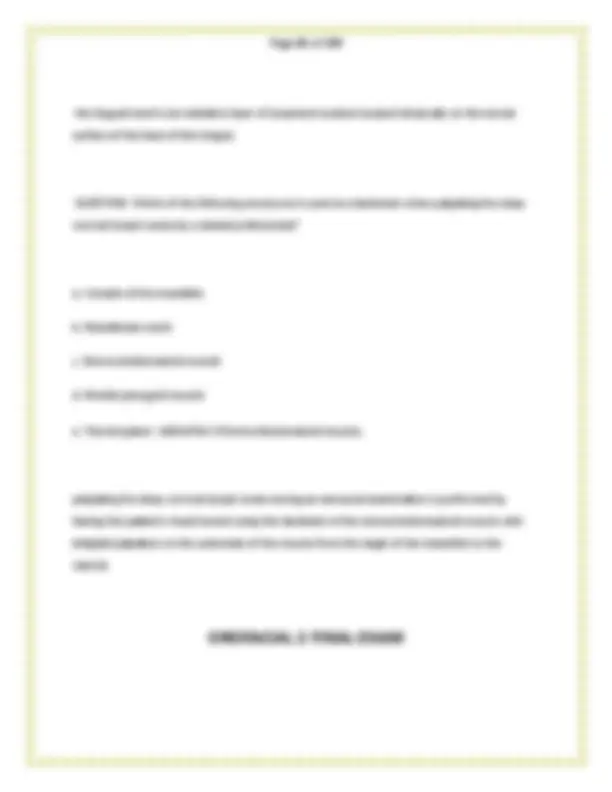
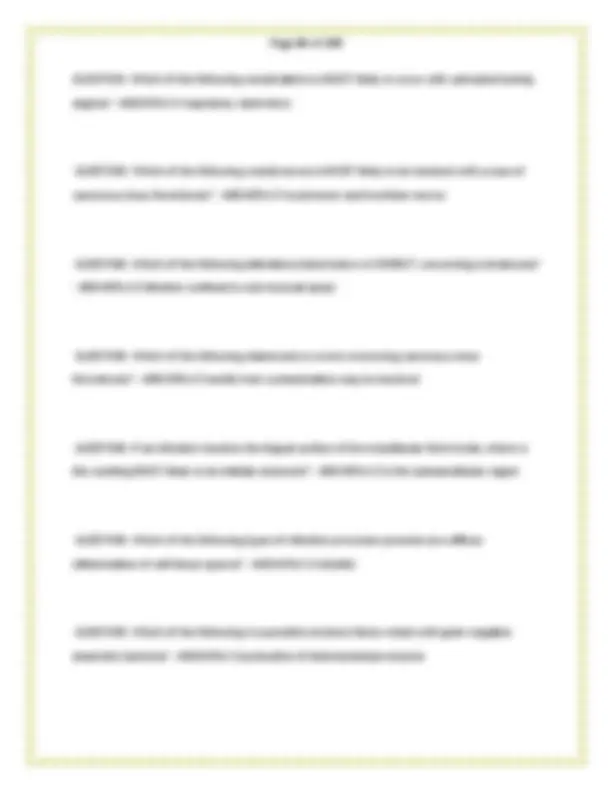
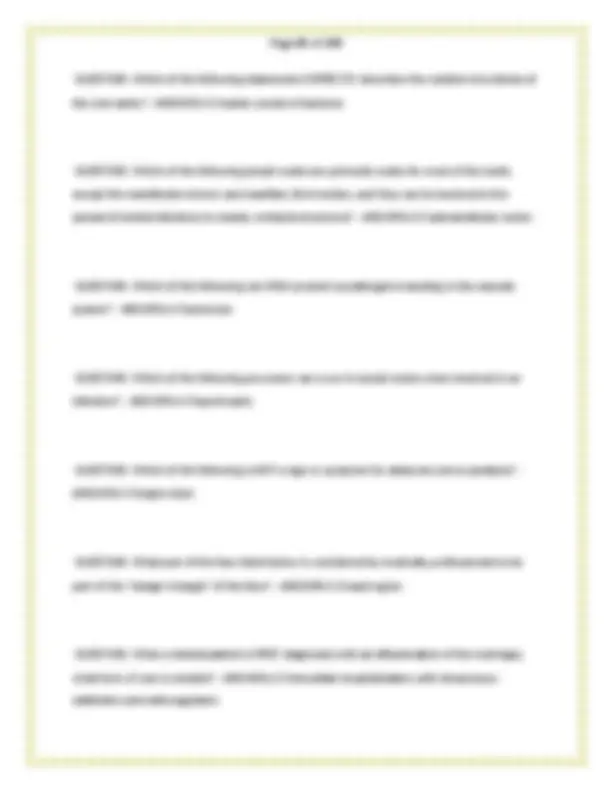
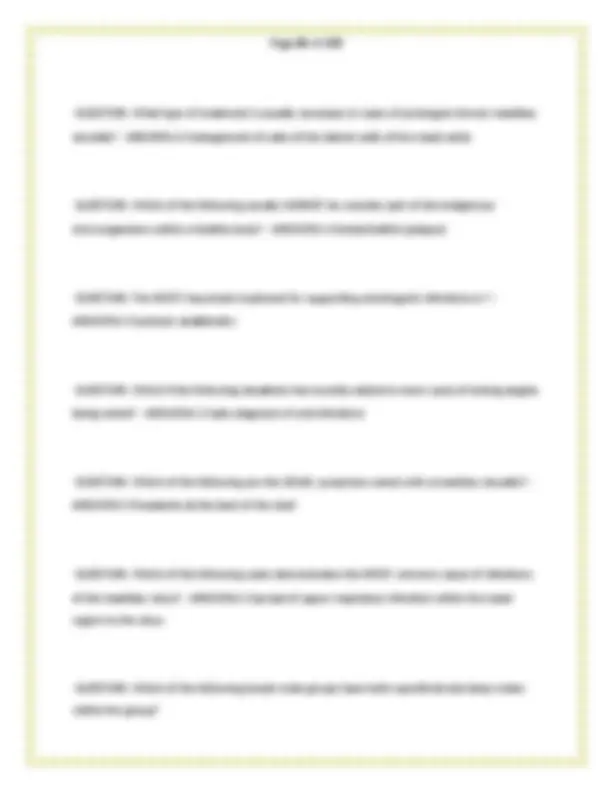
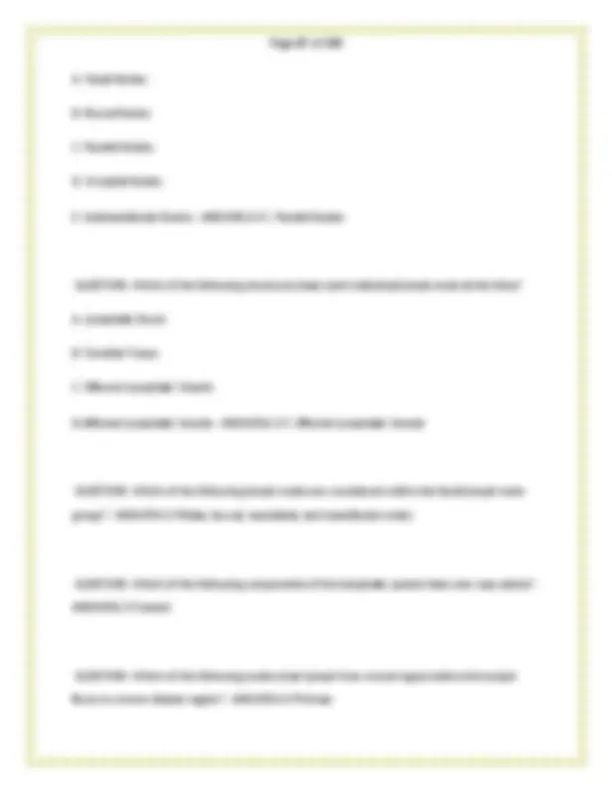
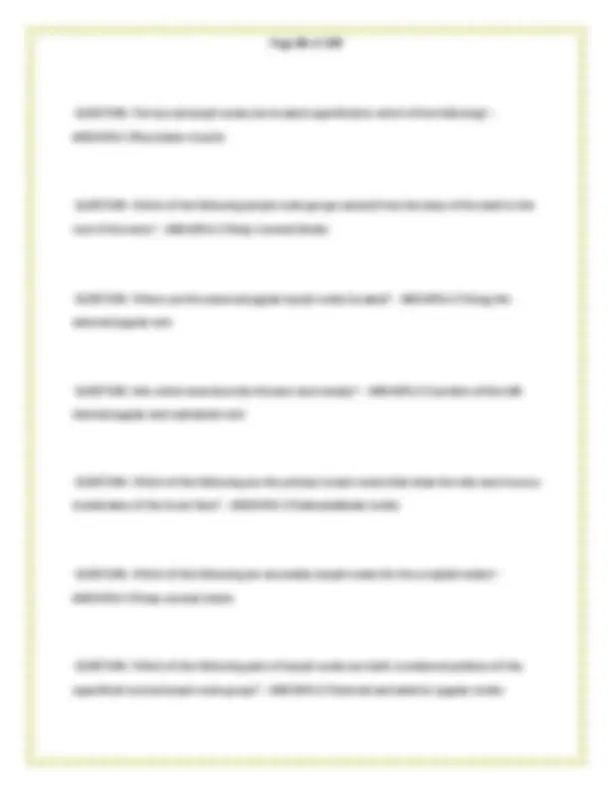
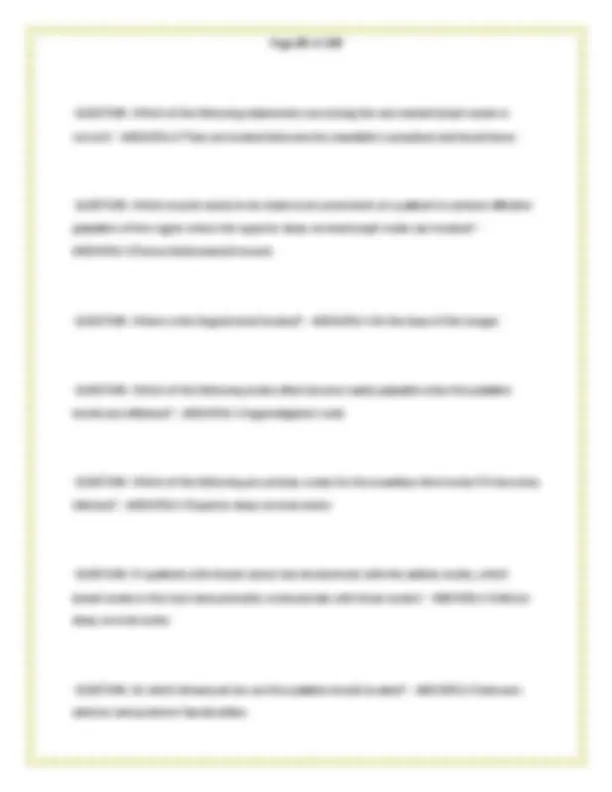
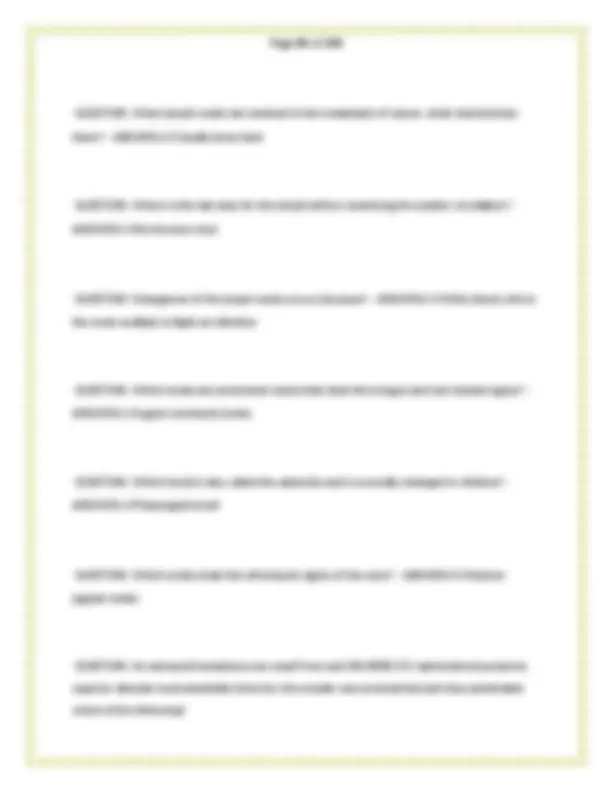
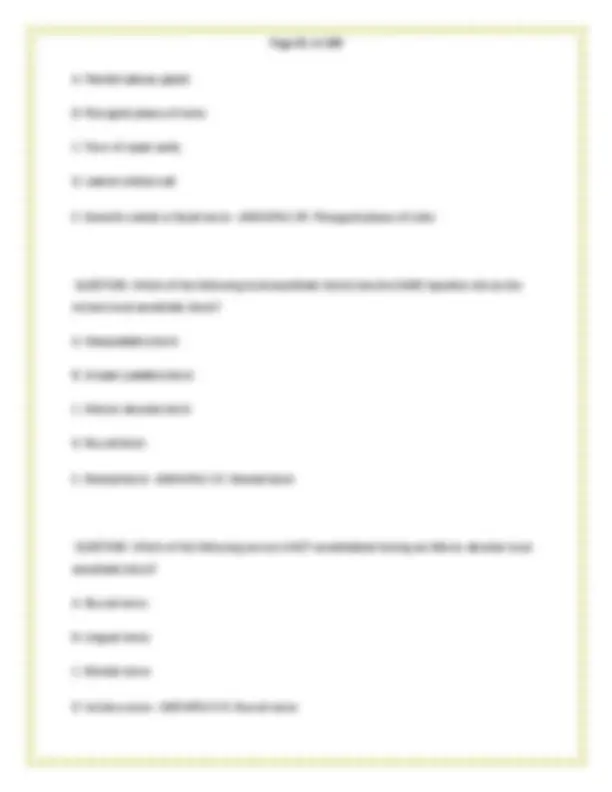
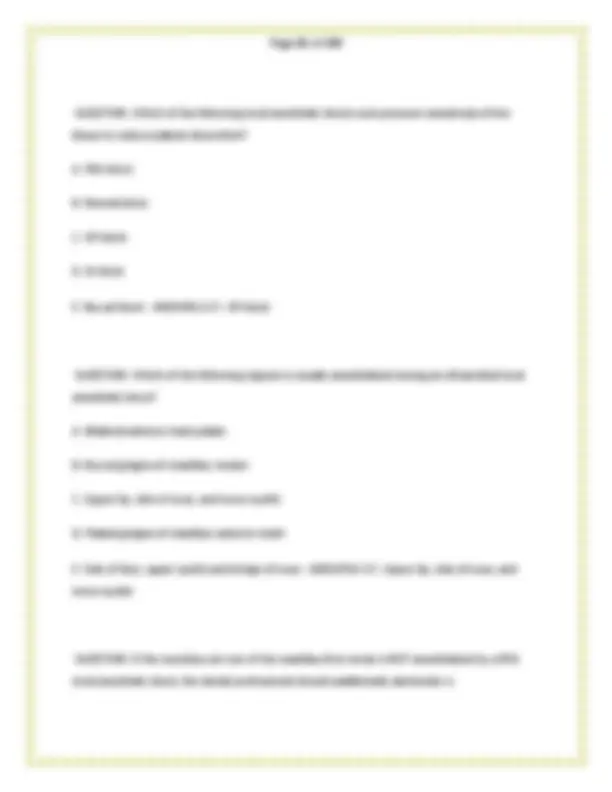
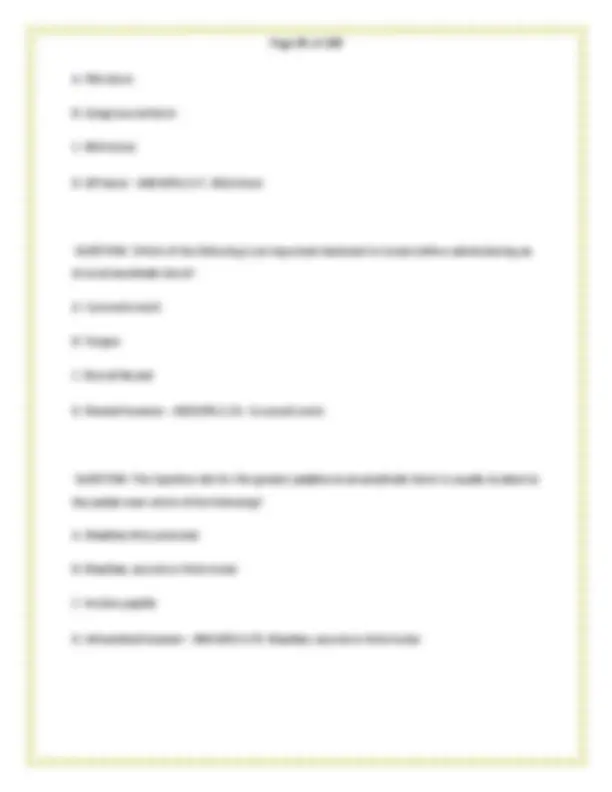
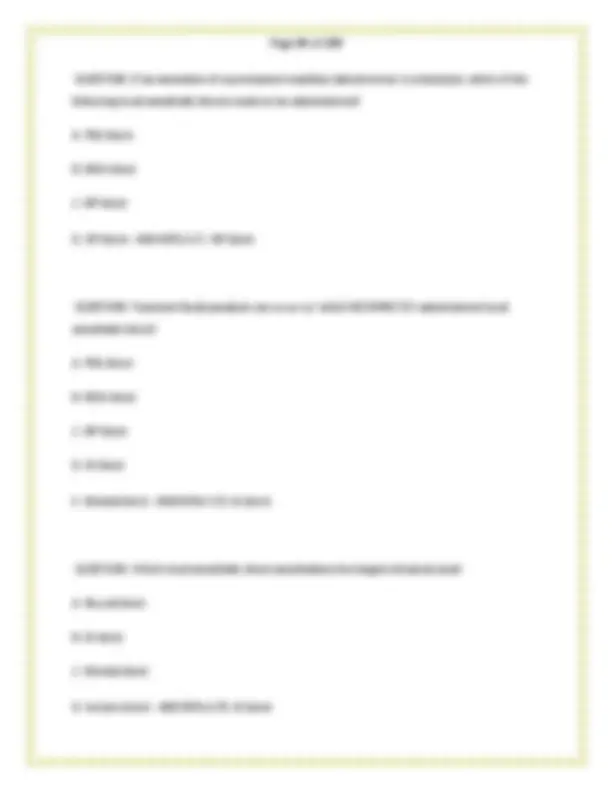
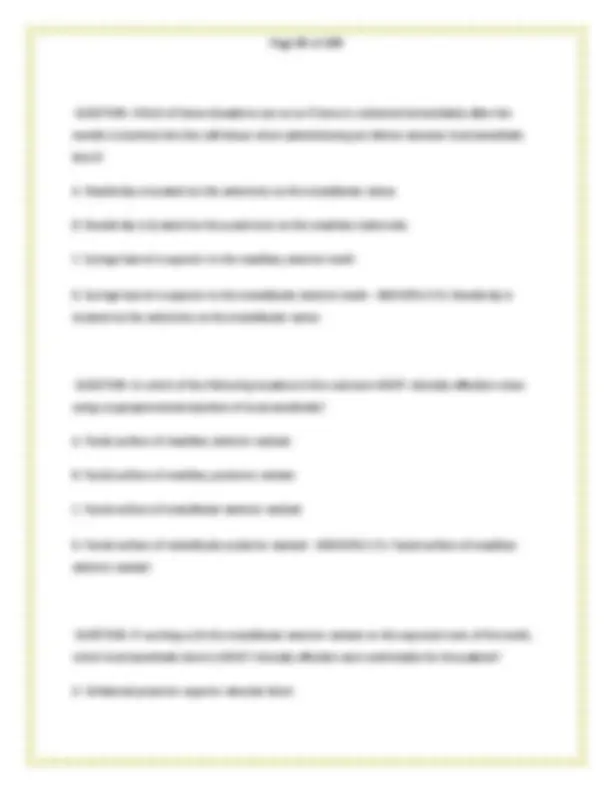
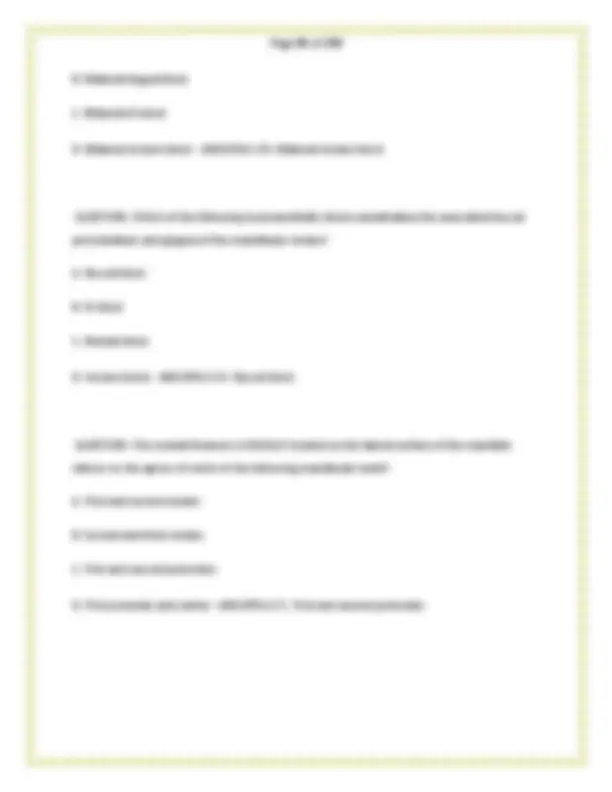
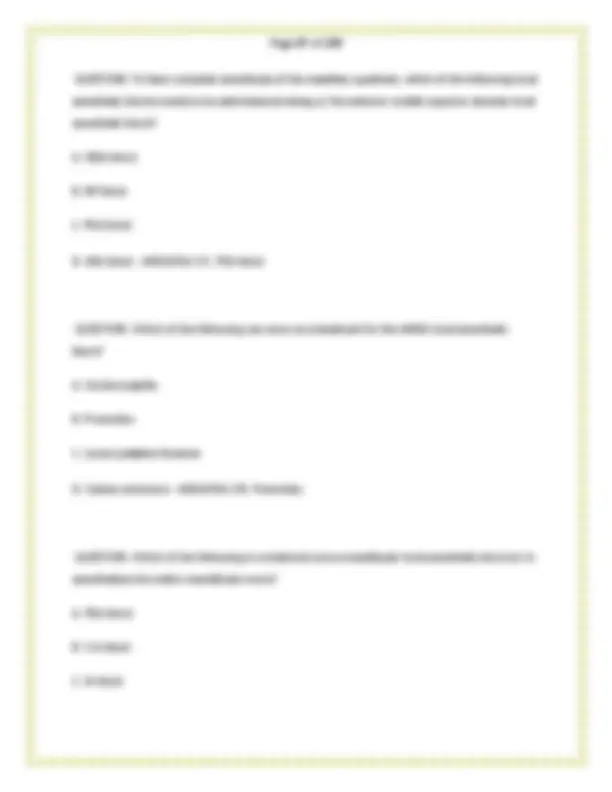
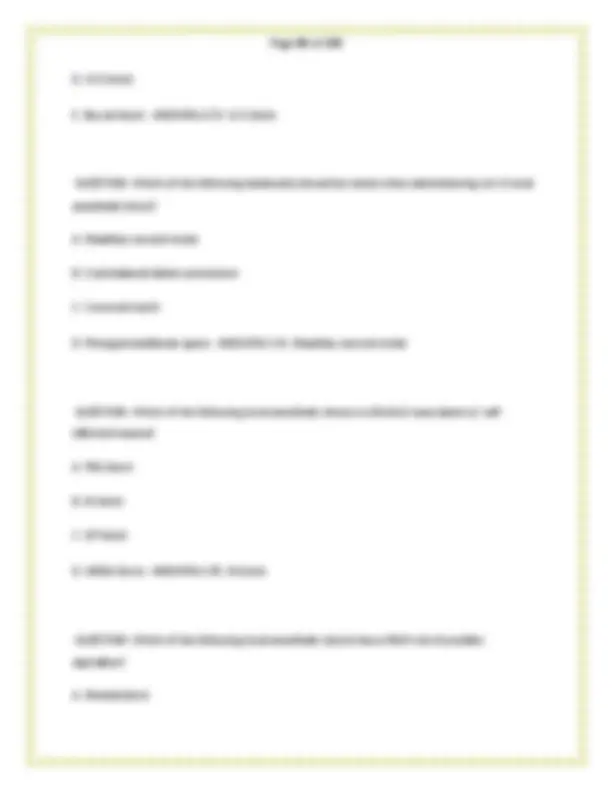
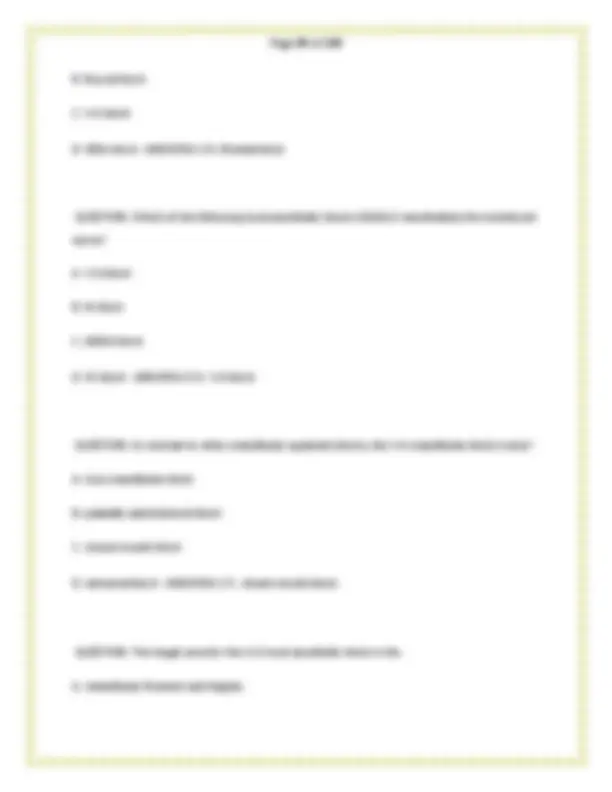
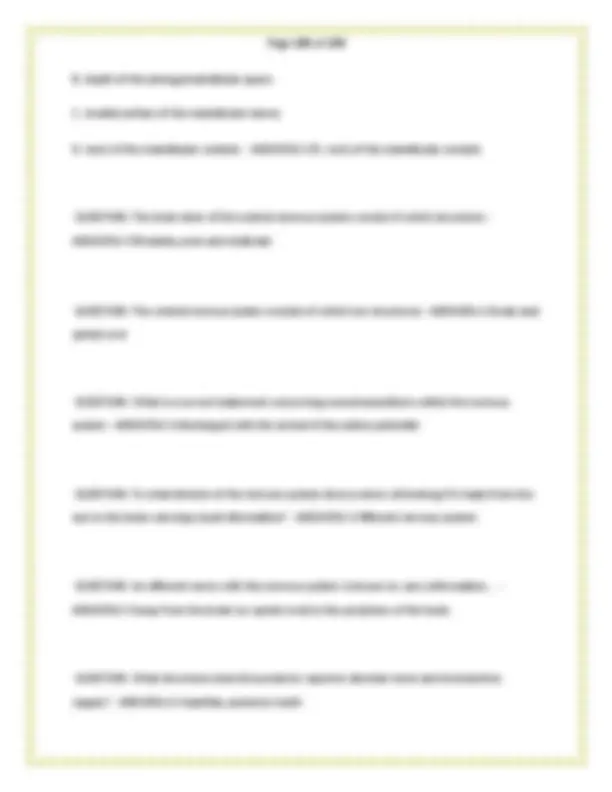


Study with the several resources on Docsity

Earn points by helping other students or get them with a premium plan


Prepare for your exams
Study with the several resources on Docsity

Earn points to download
Earn points by helping other students or get them with a premium plan
Community
Ask the community for help and clear up your study doubts
Discover the best universities in your country according to Docsity users
Free resources
Download our free guides on studying techniques, anxiety management strategies, and thesis advice from Docsity tutors
OROFACIAL 2 FINAL EXAM LATEST VERSION THIS YEAR WITH 550 QUESTIONS AND WELL ELABORATED ANSWERS WITH JUST RELEASED .pdf
Typology: Exams
1 / 239

This page cannot be seen from the preview
Don't miss anything!





























































































QUESTION: Which of the following descriptions concerning the maxillary artery is CORRECT? A. Arises from the internal carotid artery B. Enters the pterygopalatine fossa and forms terminal branches C. Arises from the zygomaticofacial foramen to emerge on the face D. Has mandibular, maxillary, nasal, palatine, and occipital branches - ANSWER✔✔Enters the pterygopalatine fossa and forms terminal branches QUESTION: *A venous sinus w/in the vascular system is a A. network of blood vessels. B. clot on the inner vessel wall. C. blood-filled space b/t two tissue layers. D. smaller vein or venule - ANSWER✔✔blood-filled space b/t two tissue layers. QUESTION: Which of the following arteries is a branch from the facial artery? A. Superior labial
B. Ascending pharyngeal C. Posterior auricular D. Transverse facial - ANSWER✔✔Superior labial QUESTION: Which of the following structures is a smaller vessel that branches off an arteriole to supply blood directly to tissue? A. Artery B. Capillary C. Vein D. Venule - ANSWER✔✔Capillary QUESTION: The carotid pulse can be palpated by emergency medical service personal at the level of the A. thyroid cartilage. B. hyoid bone .C. angle of the mandible. D. supraclavicular fossa. - ANSWER✔✔thyroid cartilage. QUESTION: The tongue is MAINLY supplied by a branch from the A. internal carotid artery.
A. aorta. B. brachiocephalic artery. C. internal carotid artery. D. external carotid artery. - ANSWER✔✔A. aorta. QUESTION: Which of the following is the larger terminal branch of the external carotid artery? A. Superficial temporal artery B. Ascending palatine artery C. Facial artery D. Maxillary artery E. Lingual artery - ANSWER✔✔D. Maxillary artery QUESTION: *The posterior superior alveolar artery and its branches supply the A. maxillary posterior teeth and periodontium B. mandibular posterior teeth and periodontium C. sternocleidomastoid muscle and thyroid gland D. temporalis muscle and parotid salivary gland - ANSWER✔✔maxillary posterior teeth and periodontium
QUESTION: *Which of the following descriptions concerning the pterygoid plexus of veins is CORRECT? A. Located around the infrahyoid muscles Protects the superficial temporal artery C. Drains the maxillary and mandibular dental arches D. Can be pierced resulting in xerostomia - ANSWER✔✔Drains the maxillary and mandibular dental arches QUESTION: Which of the following veins results from the merger of the superficial temporal vein and maxillary vein? A. Facial B. Retromandibular C. Internal jugular D. External jugular E. Brachiocephalic - ANSWER✔✔Retromandibular QUESTION: Which of the following arteries arises from the inferior alveolar artery before the artery enters the mandibular canal? A. Mylohyoid artery B. Incisive artery
QUESTION: *Which of the following vascular lesions may result when a clot on the inner blood vessel wall becomes dislodged and travels in the vessel? A. Hematoma B. Venous sinus C. Embolus D. Hemorrhage - ANSWER✔✔Embolus QUESTION: *The two brachiocephalic veins unite to form the A. subclavian veins. B. external jugular veins. C. internal jugular veins. D. superior vena cava. E. aorta. - ANSWER✔✔D. superior vena cava. QUESTION: Which of the following structures is contained w/in the carotid sheath? A. Facial nerve B. Internal jugular vein C. Aorta D. Superficial lymph nodes - ANSWER✔✔B. Internal jugular vein
QUESTION: The brainstem of the CNS consists of which structures? a. cerebrum, cerebellum, pons & medulla b. medulla, cerebrun, midbrain & pons c. medulla, pons & midbrain d. midbrain, ganglia & nerves - ANSWER✔✔c. medulla, pons & midbrain QUESTION: The CNS consists of which two of the following structures: a. spinal cord and PNS b. brain and spinal cord c. autonomic and somatic nervous systems d. brain and autonomic nervous system - ANSWER✔✔b. brain and spinal cord QUESTION: Which of the following is a CORRECT statement concerning neurotransmitters within the nervous system? a. Discharged with the arrival of the action potential b. Bind to red blood cells so as to prompt transmission of impulses
a. frontal sinus b. maxillary posterior teeth c. parotid salivary gland d. temporalis muscle - ANSWER✔✔b. maxillary posterior teeth QUESTION: Through which of the following foramina does the faical nerve pass through the skull? a. foramen rotundum b. foramen ovale c. jugular foramen d. stylomastoid foramen - ANSWER✔✔d. stylomastoid foramen QUESTION: Which of the following cranial nerves is directly involved in Bell palsy? a. trigeminal b. facial c. glossopharyngeal d. vagus - ANSWER✔✔facial QUESTION: Which of the following nerve and muscle pairs is a CORRECT match?a. long buccal nerve and buccinator muscle
b. accessory nerve and platysma muscle c. hypoglossal nerve and intrinsic tongue muscles d. auriculotemporal nerve and temporalis muscle - ANSWER✔✔c. hypoglossal nerve and intrinsic tongue muscles QUESTION: Which of the following nerve and innervation pairs is a CORRECT match? a. facial nerve & parotid salivary gland b. chorda tympani & sublingual salivary gland c. vagus nerve & TMJ d. lingual nerve & base of tongue - ANSWER✔✔b. chorda tympani & sublingual salivary gland QUESTION: Which of the following cranial nerves has fibers that provide crossover-innervation to the contralateral side in the skull before continuing into the brain? a. facial b. optic c. trochlear d. vestibulocochlear - ANSWER✔✔b. optic nerve QUESTION: Which of the following cranial nerves carries taste sensation for the base of the tongue?
QUESTION: The posterior belly of the digastric muscle is innervated by branches from which of the following nerves? a. facial b. mylohyoid c. buccal (long) d. maxilalry - ANSWER✔✔a. facial QUESTION: Which of the following nerves within the head and neck may show crossover- innervation from the contralateral side in a patient? a. posterior alveolar nerve b. anterior alveolar nerve c. posterior auricular nerve d. buccal nerve - ANSWER✔✔b. anterior alveolar nerve QUESTION: Which of the following nerves listed below is considered part of the opthalmic nerve? a. nasociliary b. maxillary c. zygomaticotemporal d. zygomaticofacial - ANSWER✔✔a. nasociliary
QUESTION: Which of the following anatomic names is also used for cranial nerve X? a. hypoglossal b. vagus c. glossopharyngeal d. accessory - ANSWER✔✔b. vagus QUESTION: Which of the following nerves is located within the mandibular canal?a. lingual nerve b. mylohyoid nerve c. inferior alveolar nerve d. masseteric nerve - ANSWER✔✔c. inferior alveolar nerve QUESTION: Which of the following nerves exits the foramen ovale of the sphenoid bone? a. chorda tympani of the facial nerve b. greater petrosal of the facial nerve c. ophthalmic nerve of the trigeminal nerve d. motor root of the trigeminal nerve - ANSWER✔✔d. motor nerve of the trigeminal nerve
e. inferior alveolar - ANSWER✔✔e. inferior alveolar nerve QUESTION: Which of the following is considered the loss of feeling or sensation resulting from the use of certain drugs or gases that serve as inhibitory neurotransmitters? a. paresthesia b. bell palsy c. trigeminal neuralgia d. anesthesia - ANSWER✔✔d. anesthesia QUESTION: Which nerve may in some cases also serve as an afferent nerve for the mandibular first molar, which needs to be considered when there is failure of the inferior alveolar local anesthetic block? a. mylohyoid nerve b. posterior superior alveolar nerve c. anterior middle superior alveolar nerve d. glossopharyngeal - ANSWER✔✔a. mylohyoid nerve QUESTION: Which of the following statements correctly describes the deep fasciae? - ANSWER✔✔Dence and inelastic tissue forming sheeths around deep structures
QUESTION: Which of the following structures are located with in the carotid sheath? - ANSWER✔✔Internal and common carotid arteries and the 10th cranial nerve QUESTION: In which of the following spaces is the pterygoid plexus of veins located? - ANSWER✔✔Infratemporal space QUESTION: The masticator space includes the submasseteric Space and which other space? - ANSWER✔✔Pterygomandibular space QUESTION: Which of the following types of tissue surrounds the space of the body of the mandible? - ANSWER✔✔Periosteum QUESTION: The submandibular space communicate most directly with which of the following spaces? - ANSWER✔✔Sublingual space QUESTION: Which of the following glands has BOTH a superficial lobe and deep lobe? A. Thymus gland B. Parotid gland C. Sublingual gland D. Lacrimal gland - ANSWER✔✔B. Parotid gland
E. Submandibular gland - ANSWER✔✔A. Thymus gland QUESTION: which of the following glands has a duct that usually opens on the inner surface of the cheek ,opposite the maxillary second molar? A. Thymus gland B. Parotid gland C. Thyroid gland D. Sublingual gland E. Submandibular gland - ANSWER✔✔B. Parotid gland QUESTION: Which oral landmark marks the opening the submandibular duct? A. Parotid raphe B. Lingual frenum C. Parotid papilla D. Sublingual caruncle E. Nasolacrimal duct - ANSWER✔✔D. Sublingual caruncle QUESTION: The thyroid gland as part of the endocrine system is located anterior to the - ANSWER✔✔larynx.
QUESTION: Which of the following blood vessels supplies the parotid salivary gland? A. Facial artery B. Lingual artery C. Internal carotid artery D. External carotid artery - ANSWER✔✔D. External carotid artery QUESTION: ] As endocrine glands, the parathyroid glands are known to drain - ANSWER✔✔directly into blood vessels. QUESTION: The lacrimal gland ultimately drains into the - ANSWER✔✔inferior nasal meatus. QUESTION: Which of the following can block the drainage of saliva from the duct? A. Excessive amounts of secretion B. Stone formation C. Lacrimal gland drainage D. Inflammation of blood vessels - ANSWER✔✔B. Stone formation QUESTION: Which of the following statements concerning minor salivary glands is CORRECT?